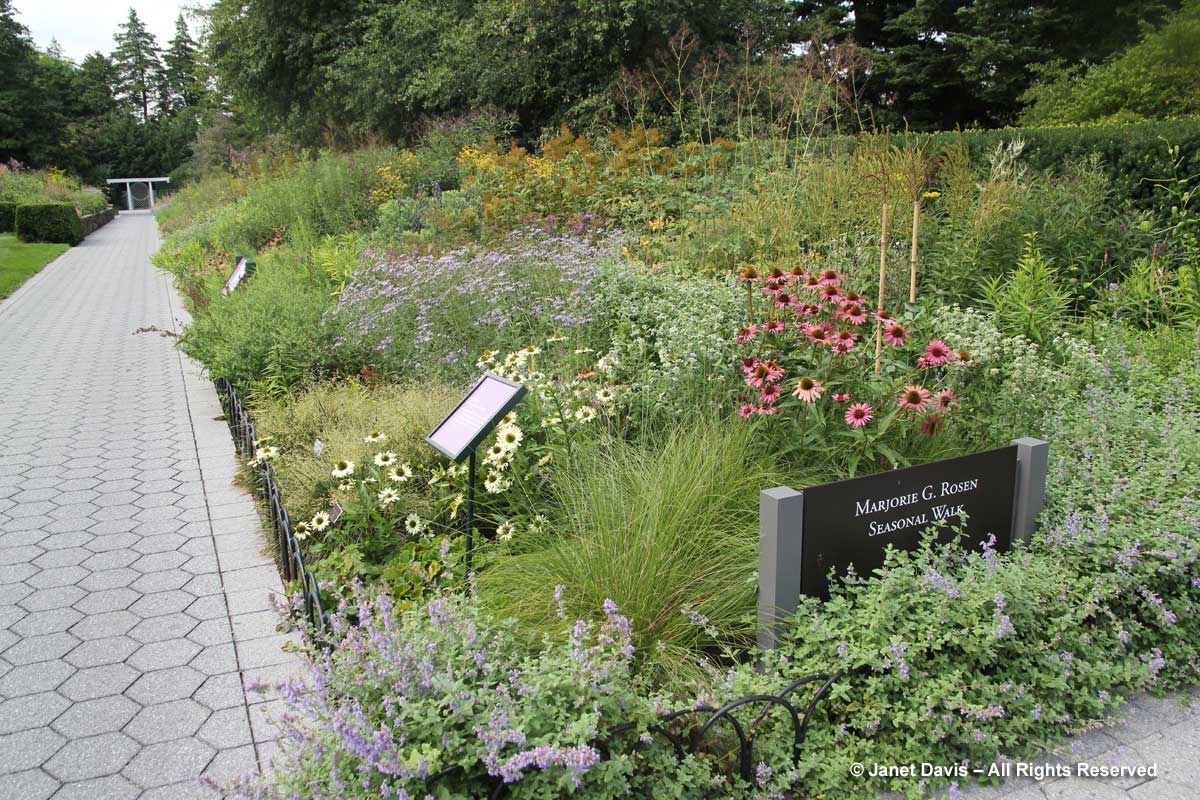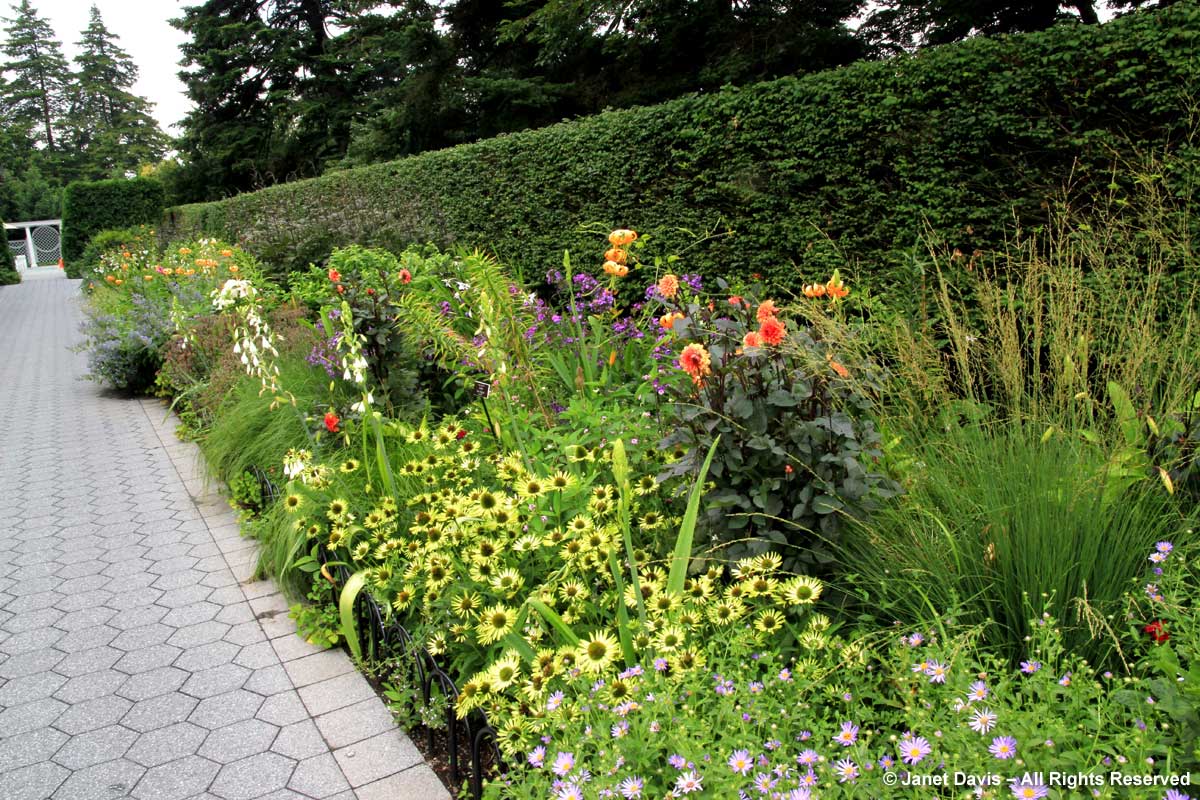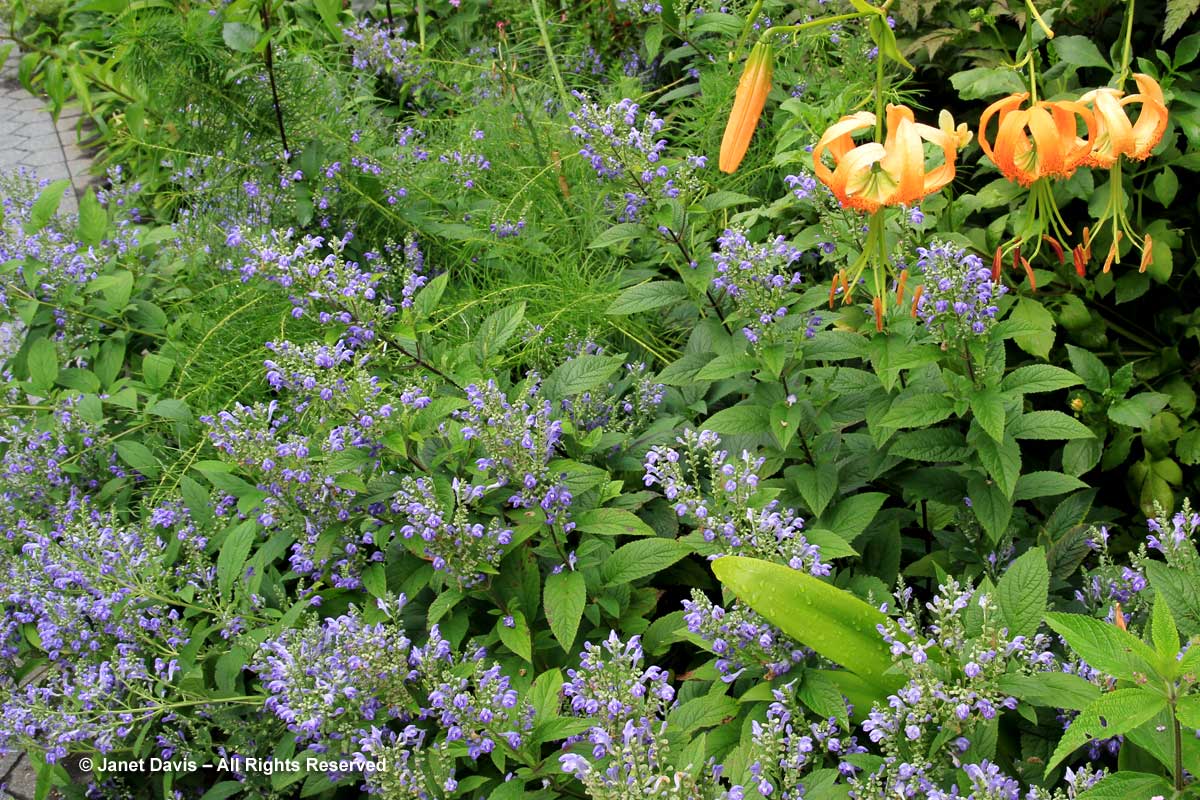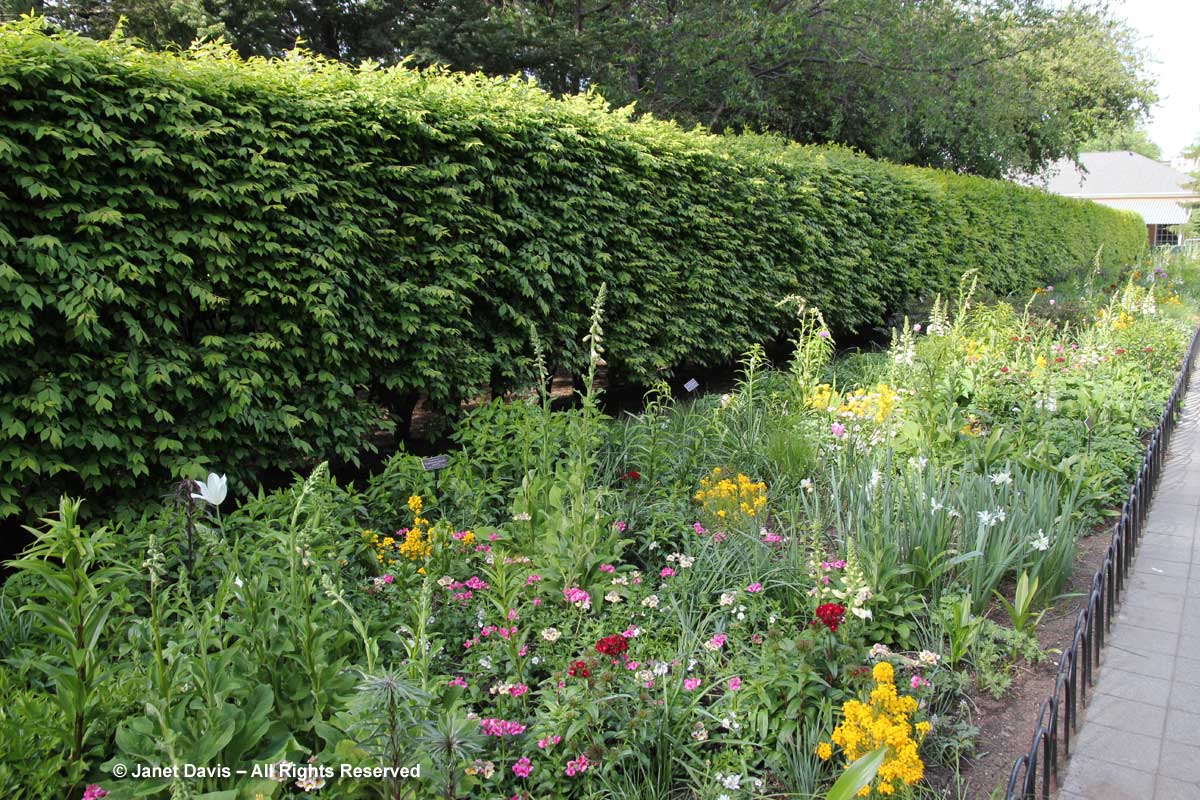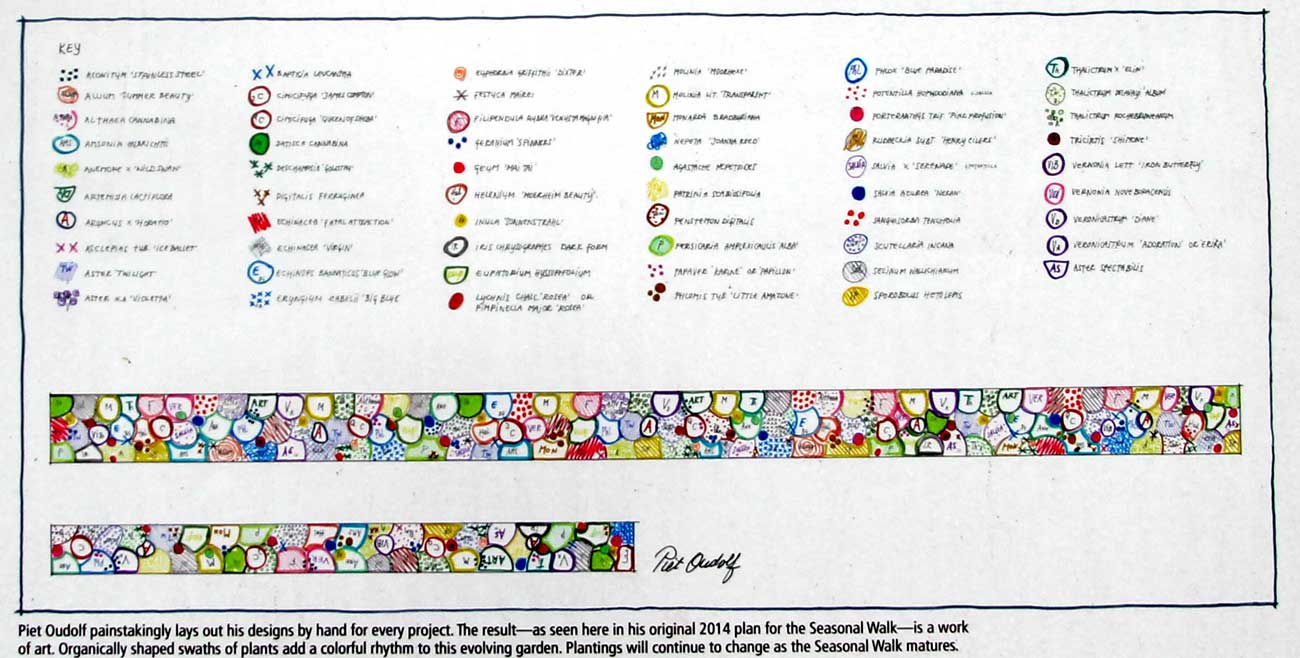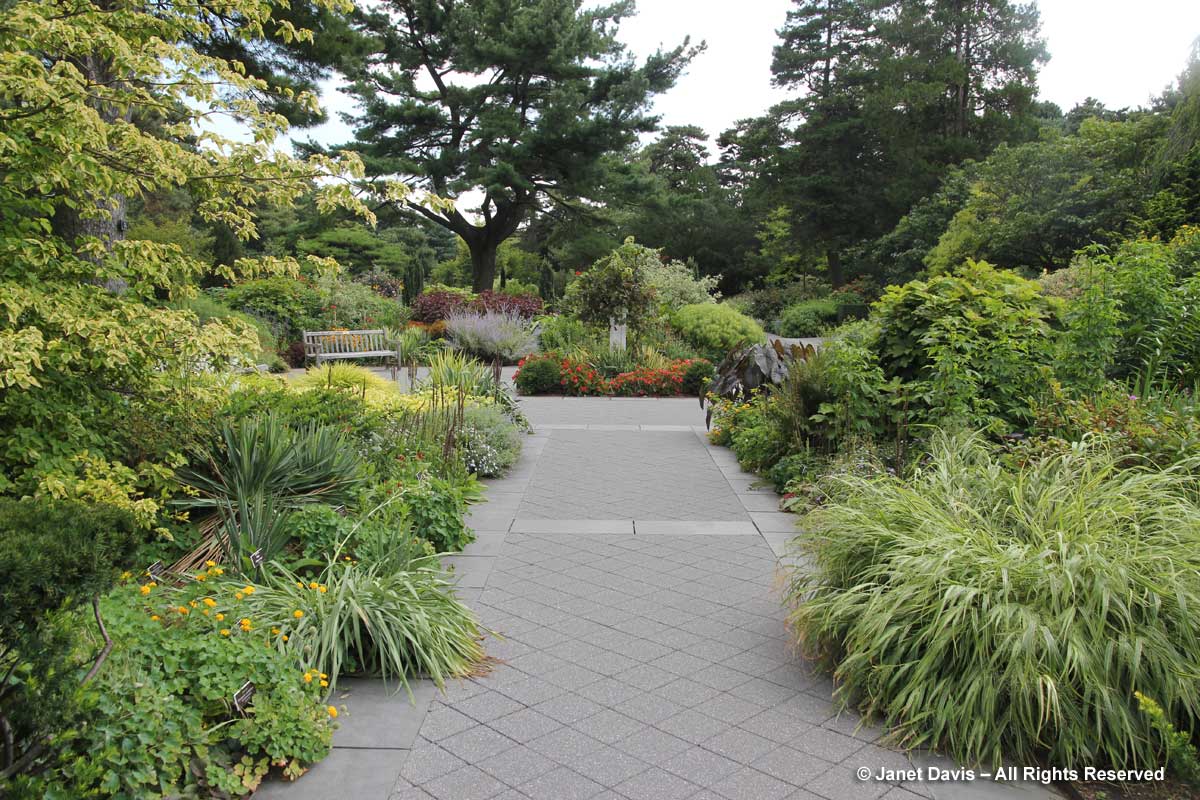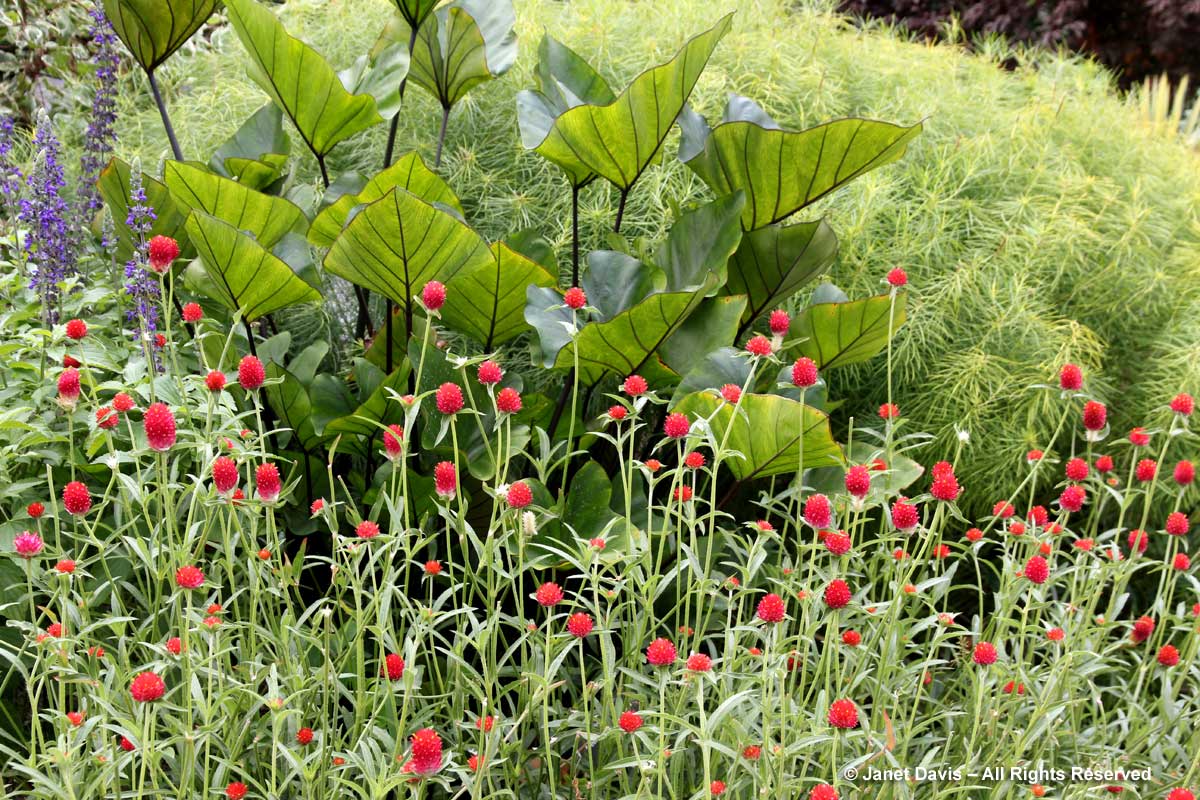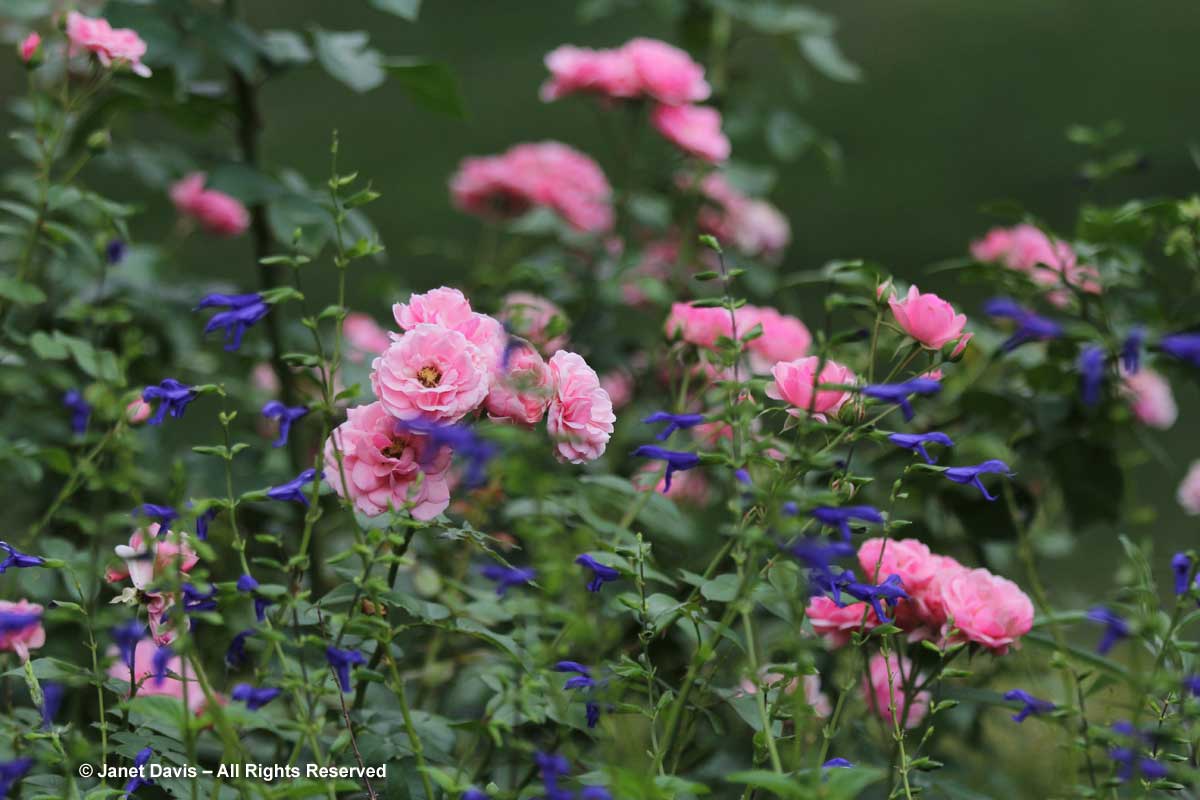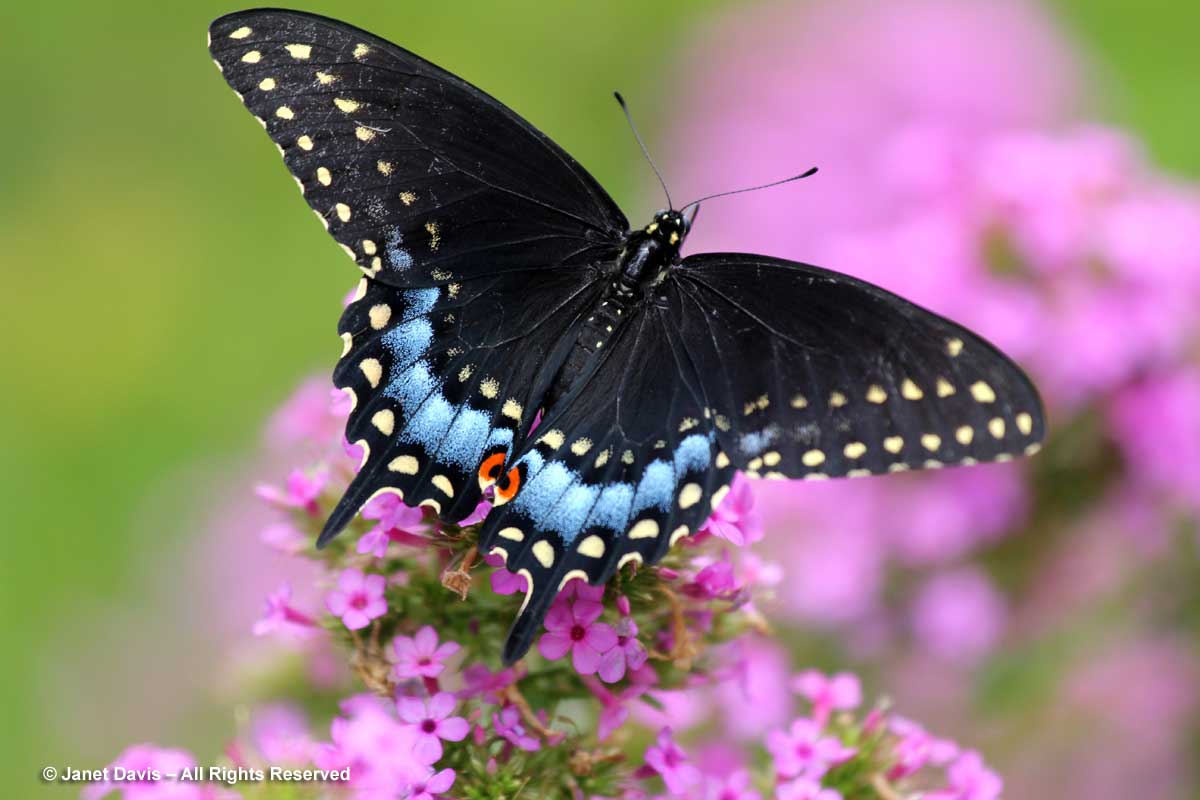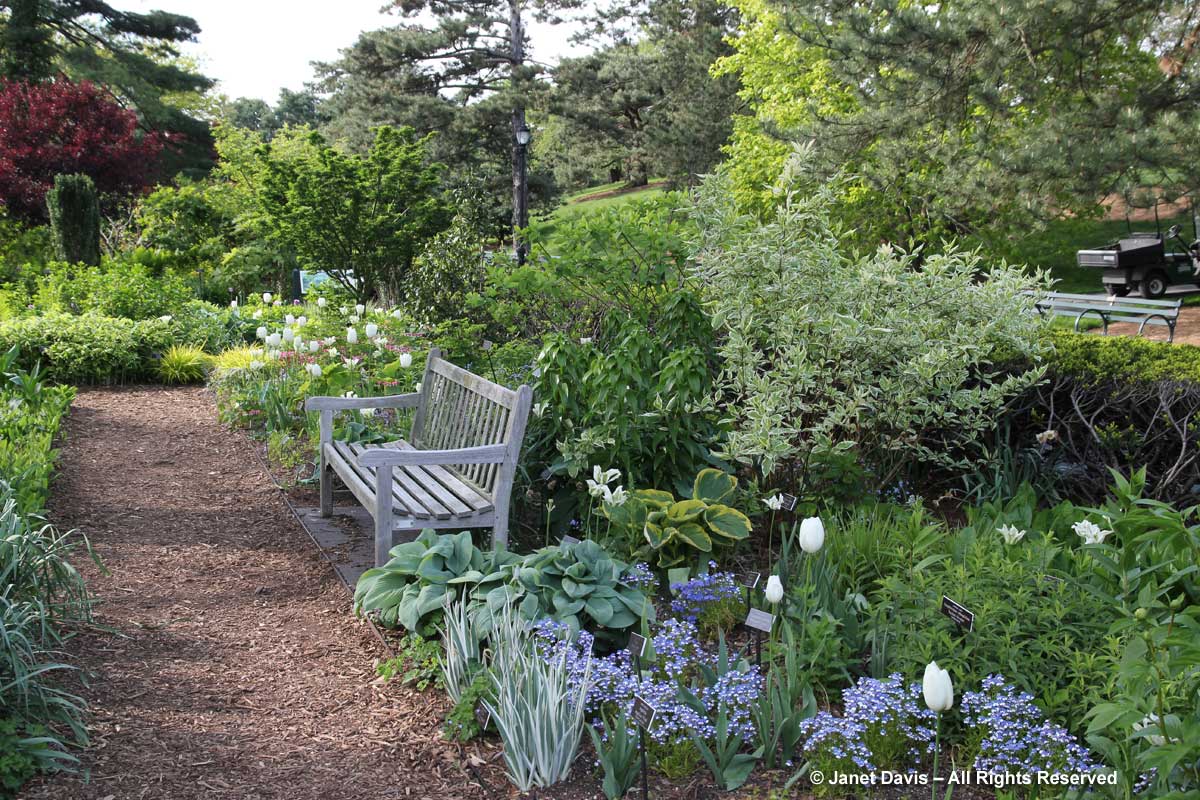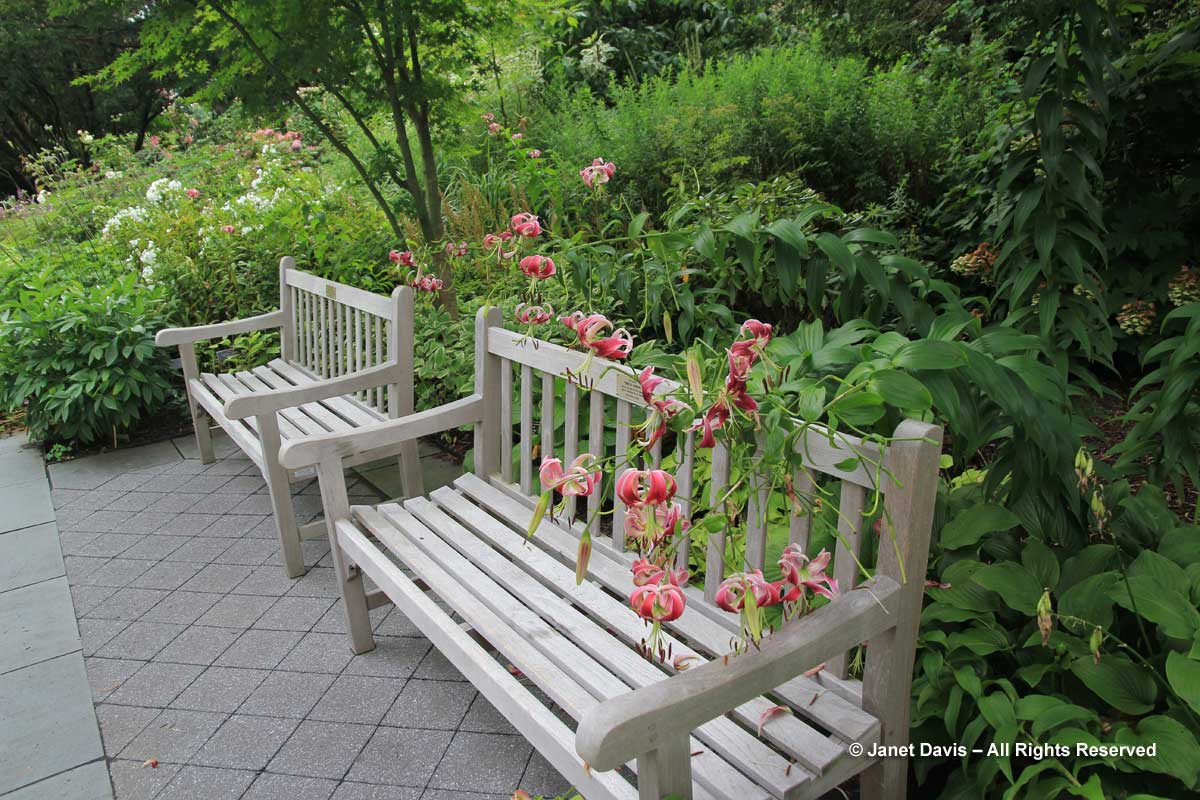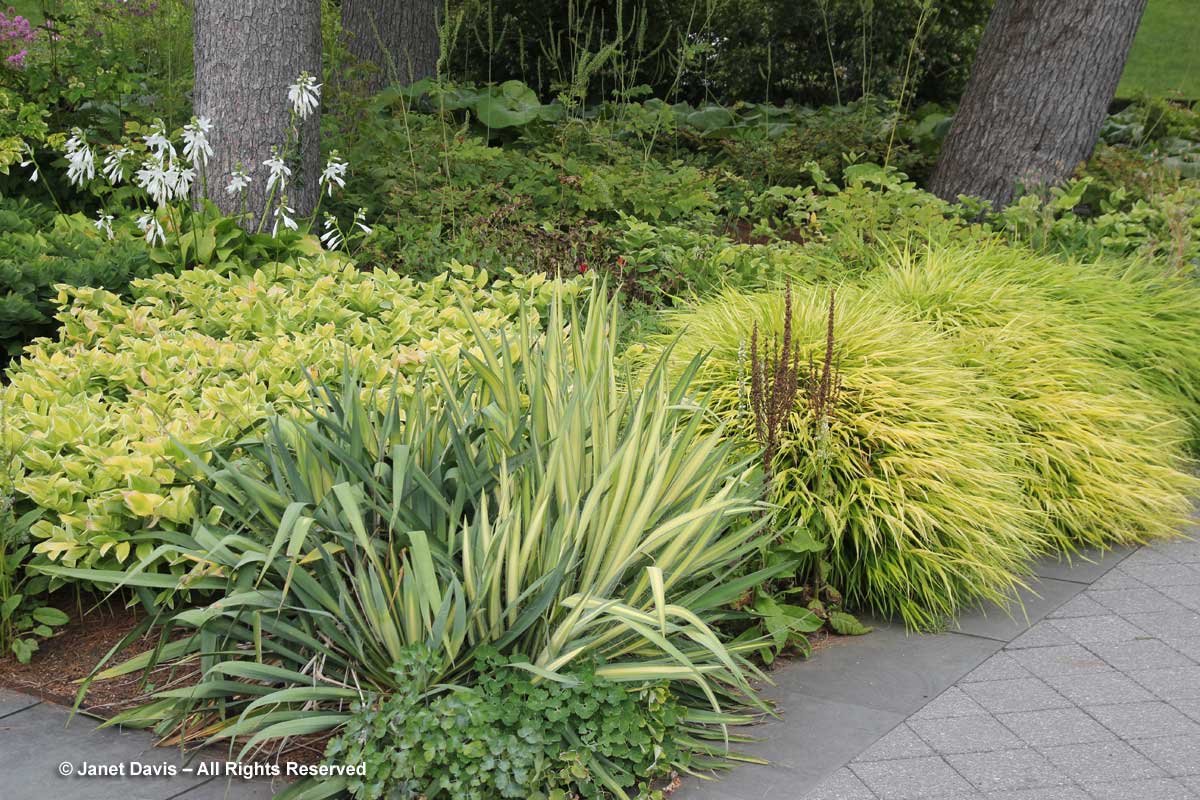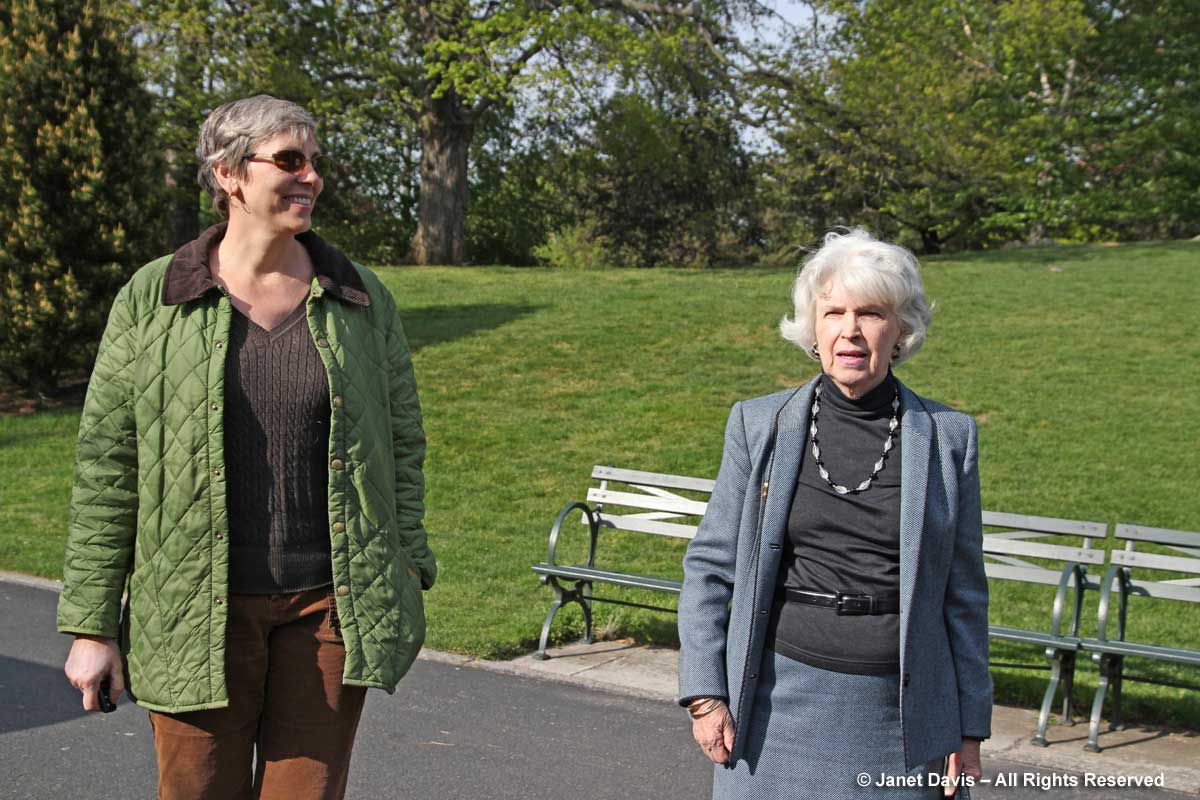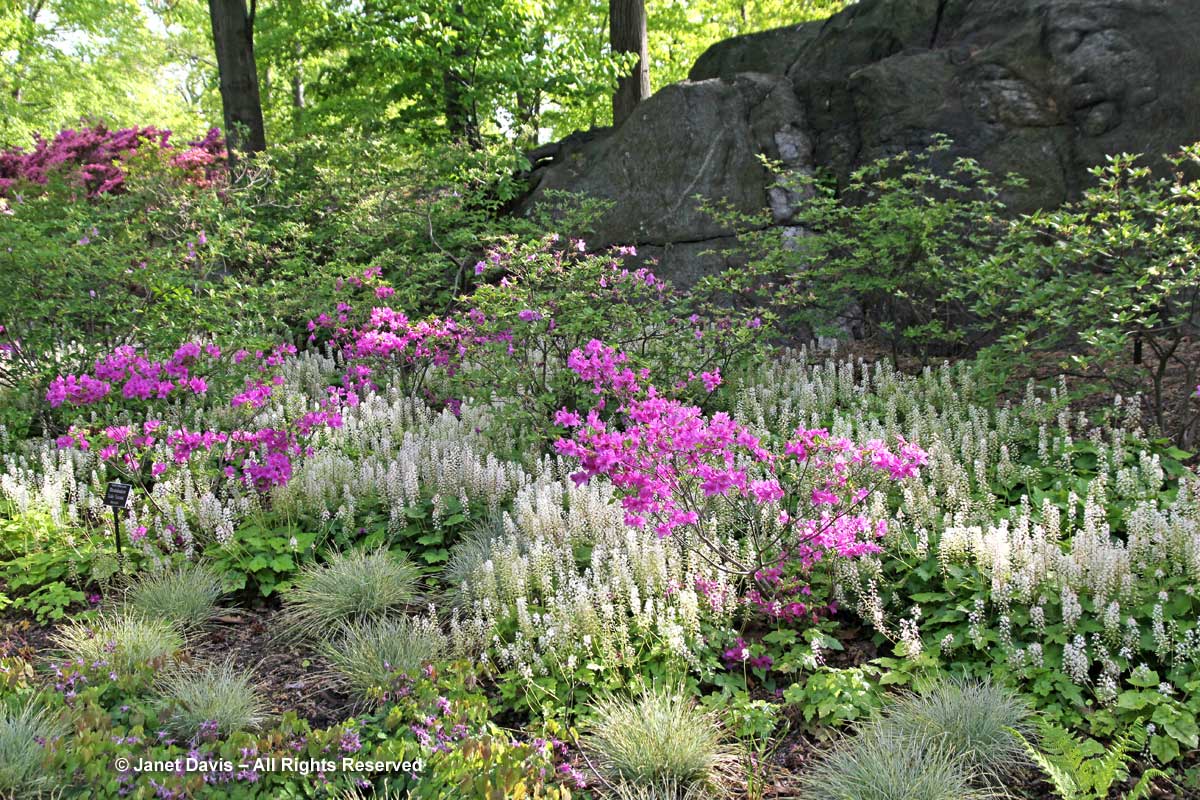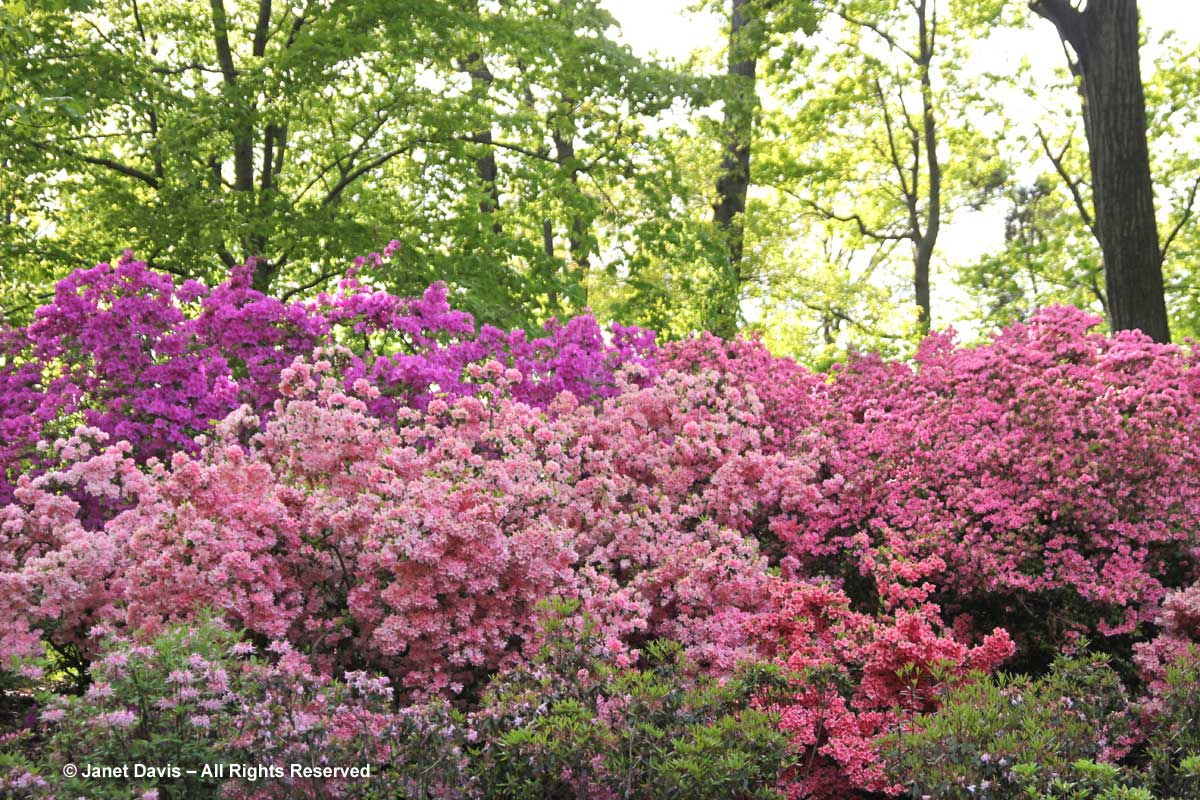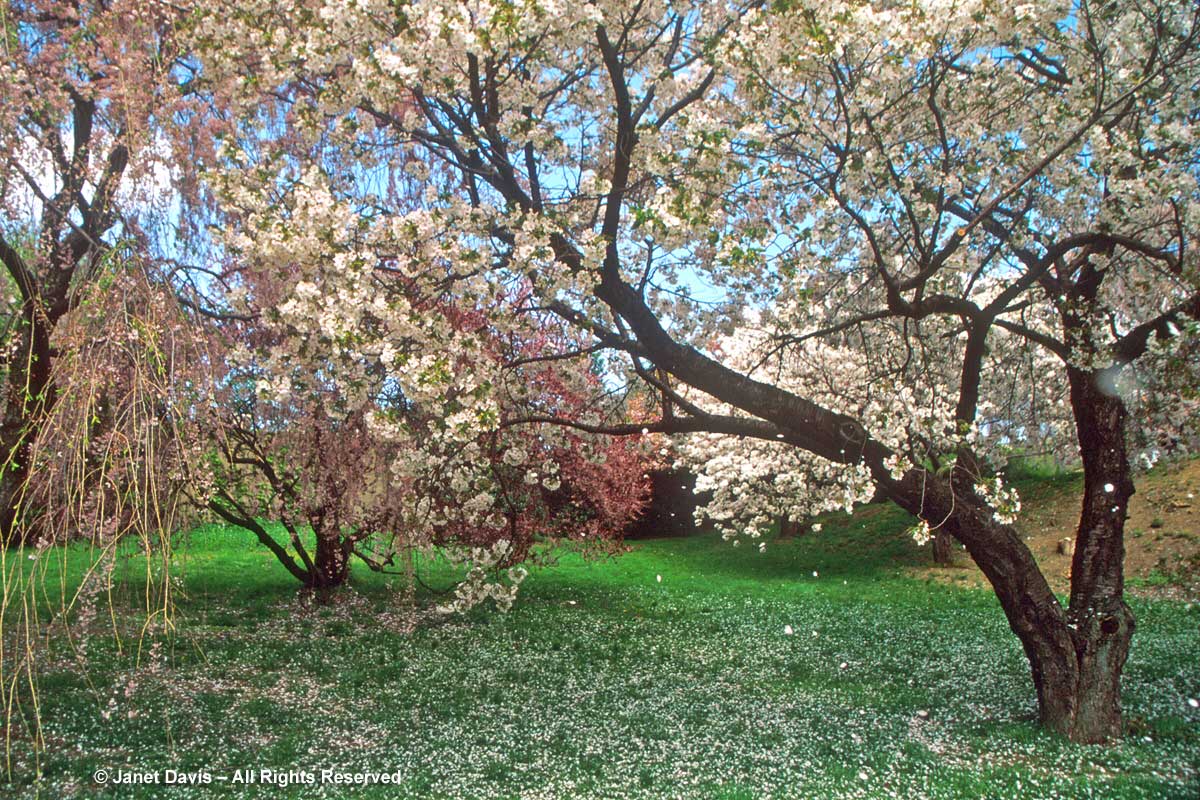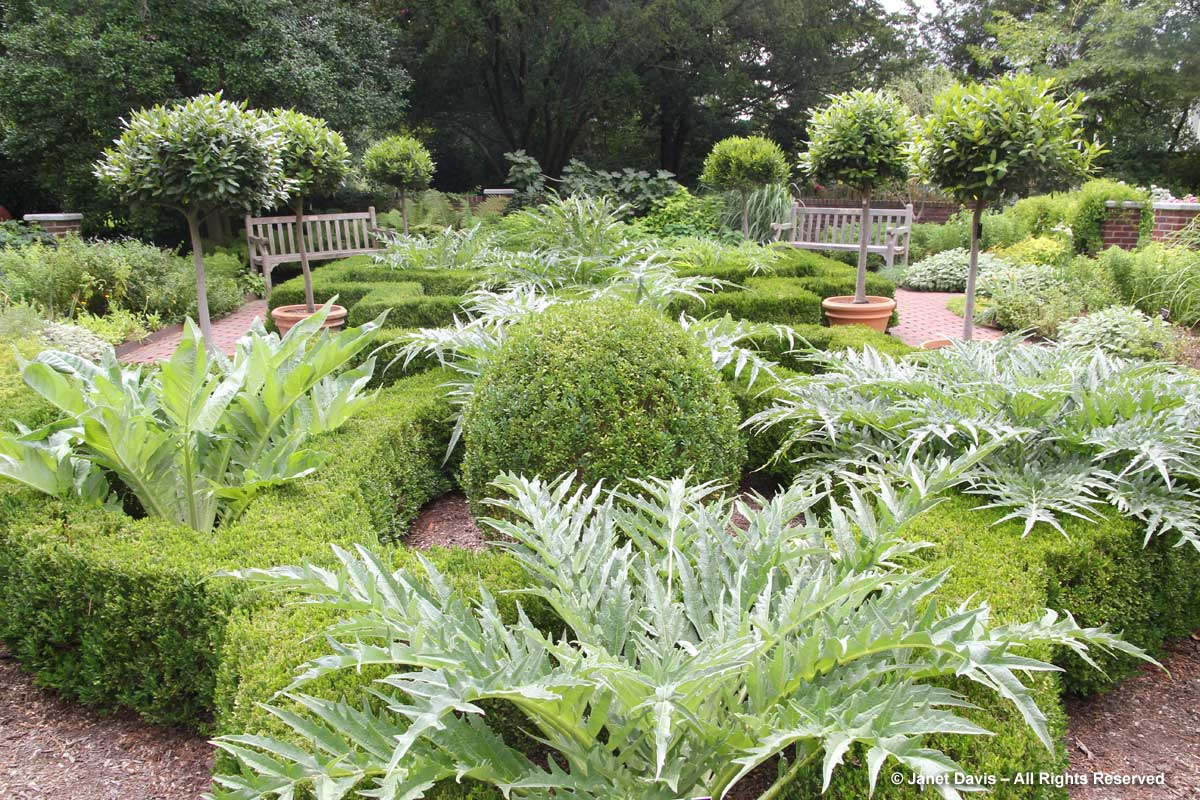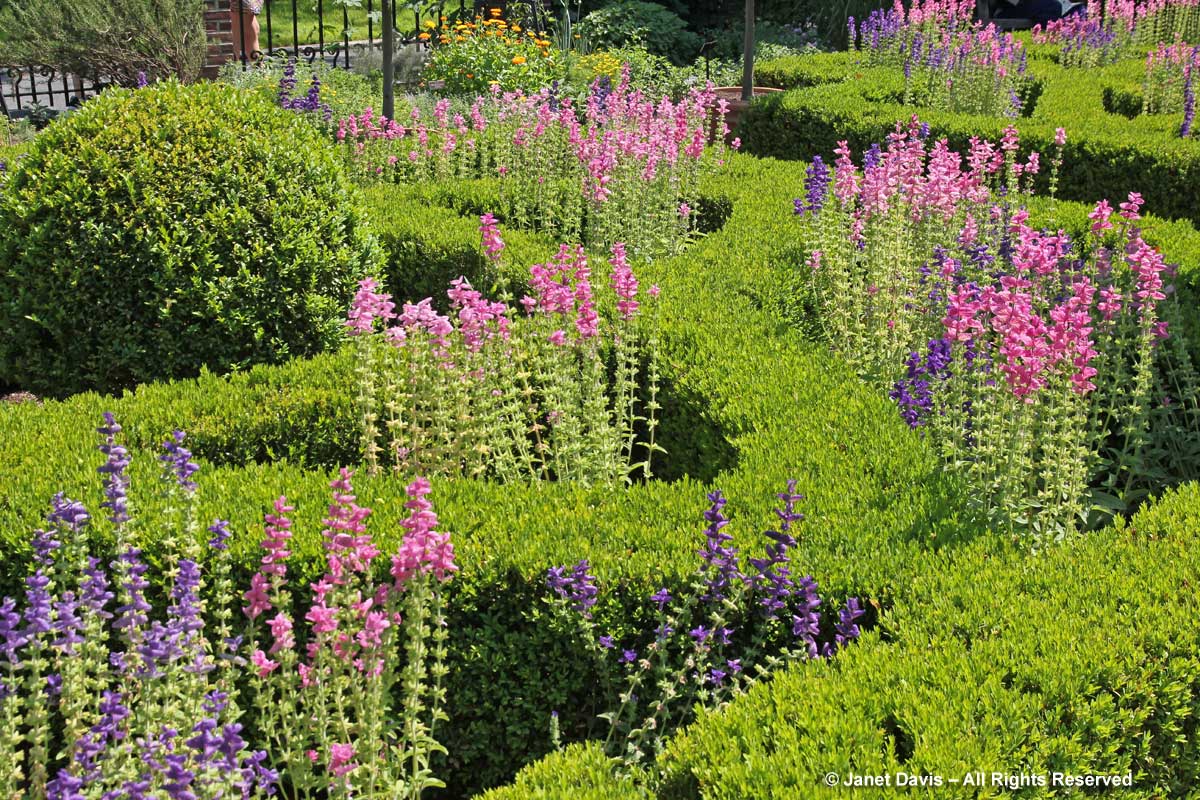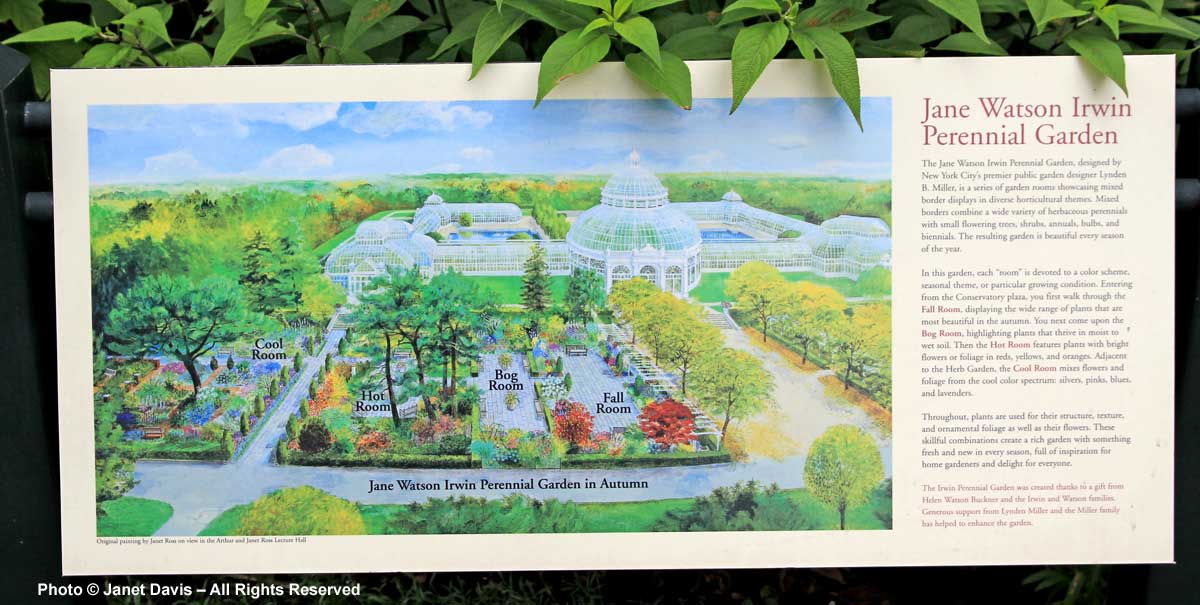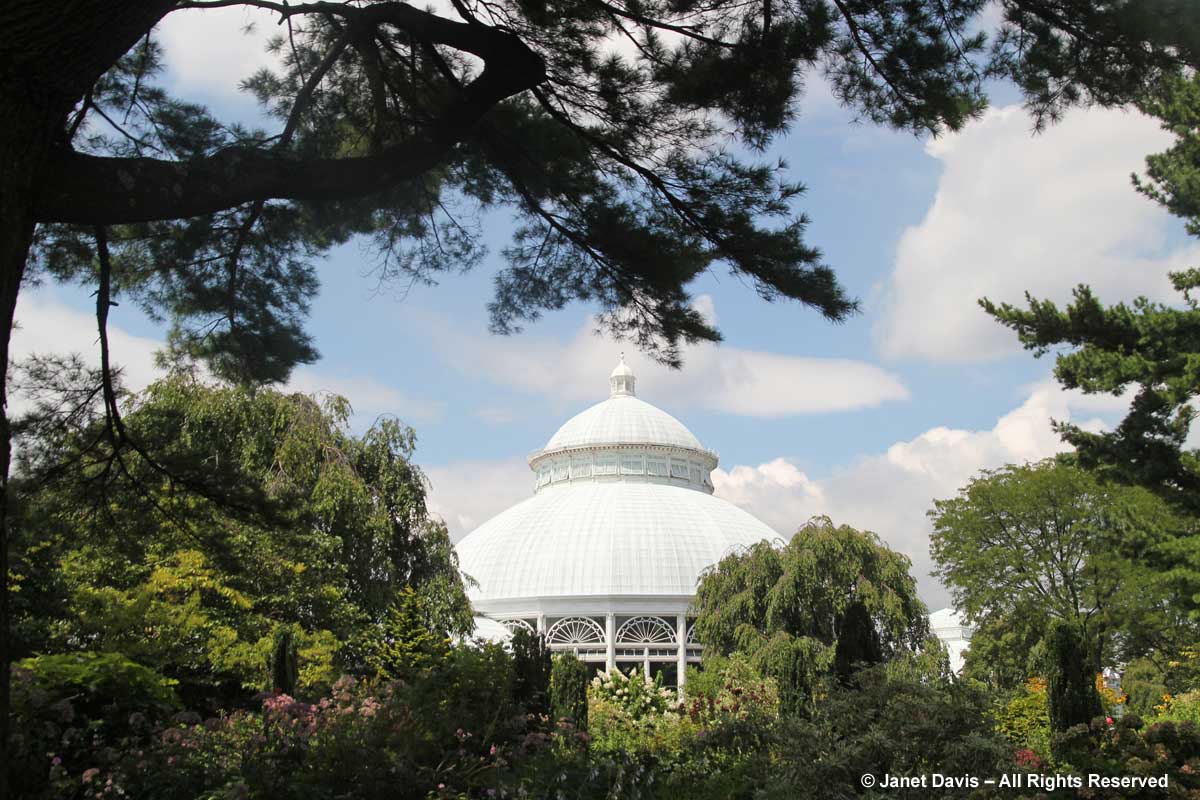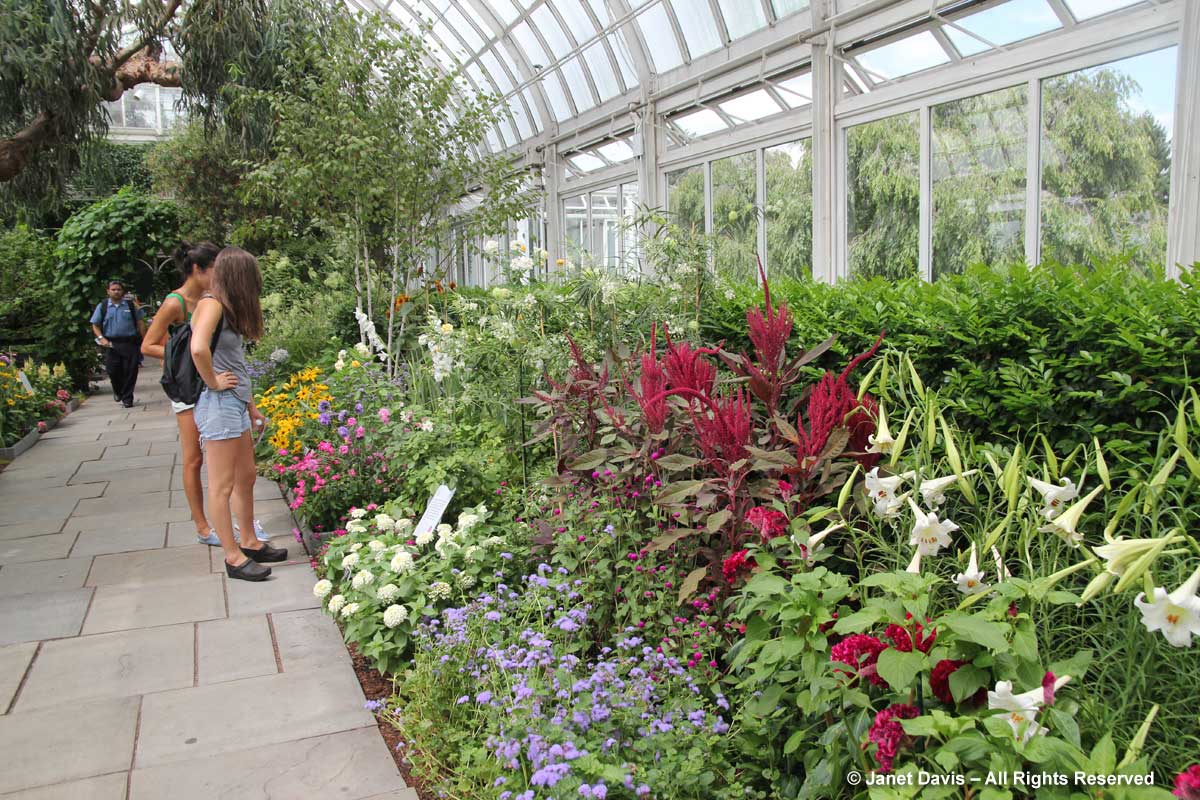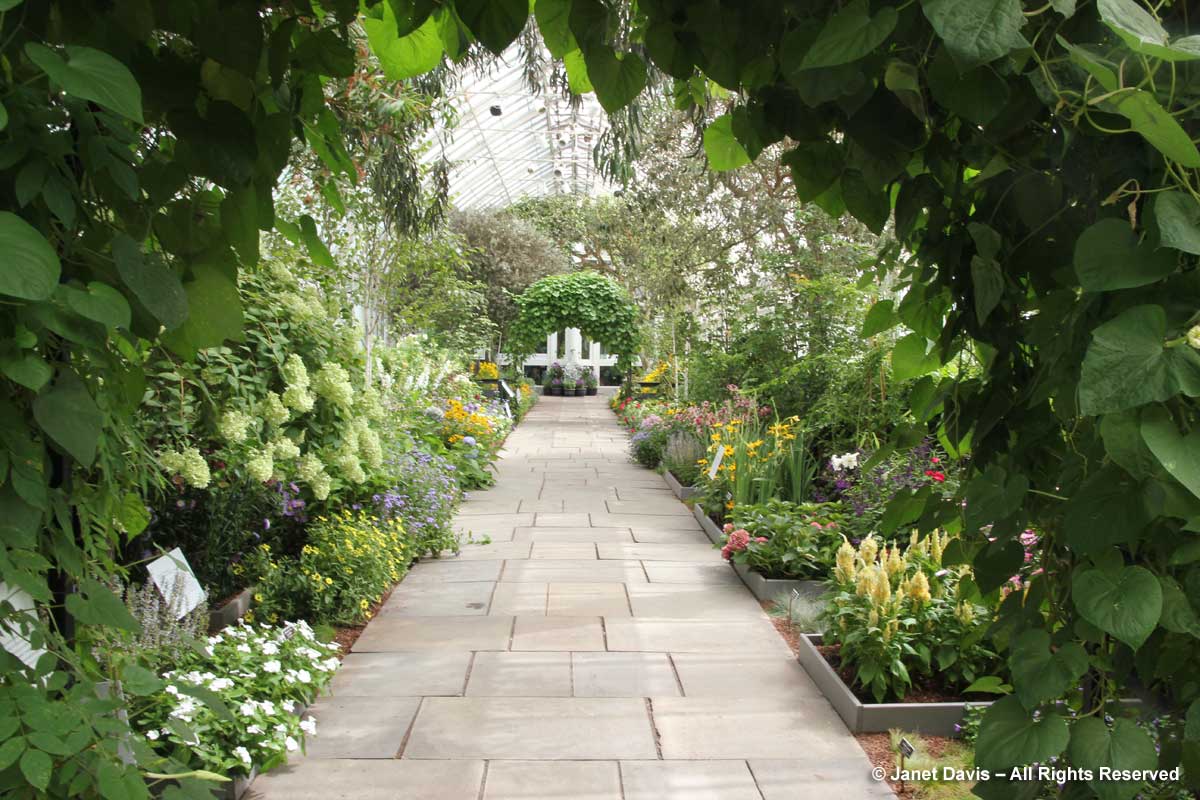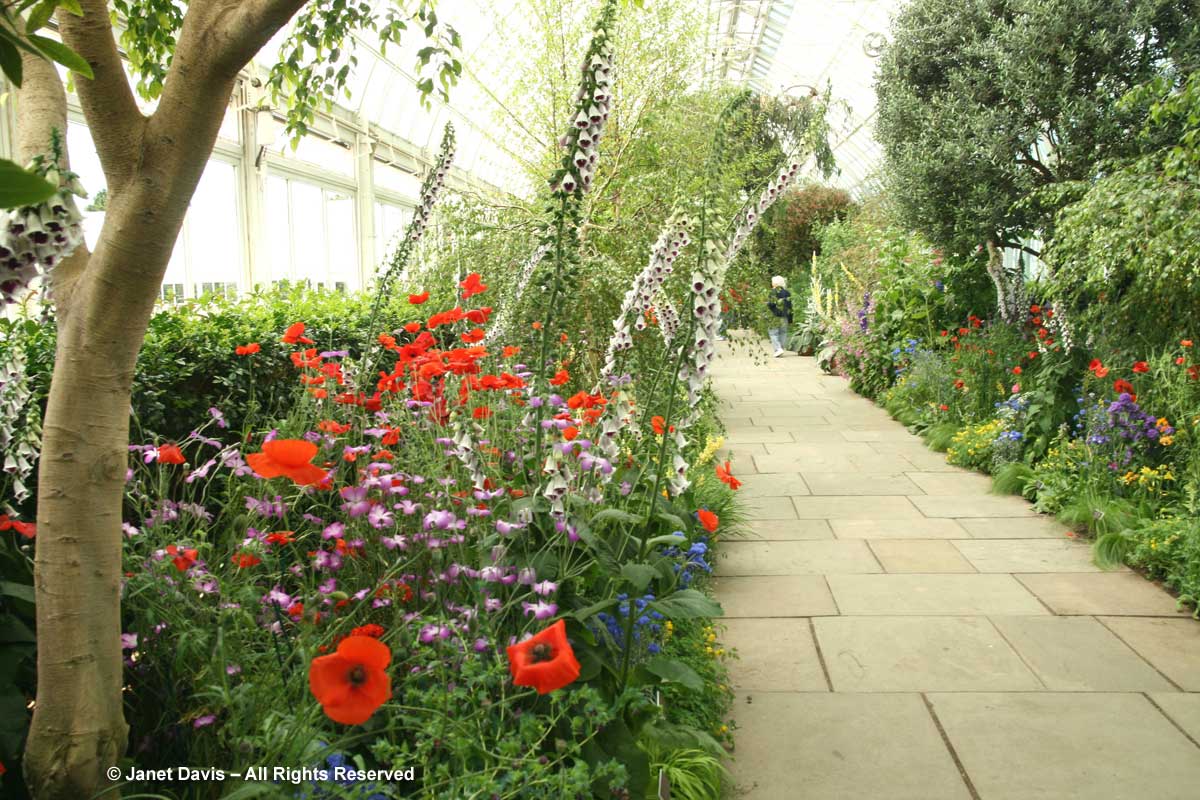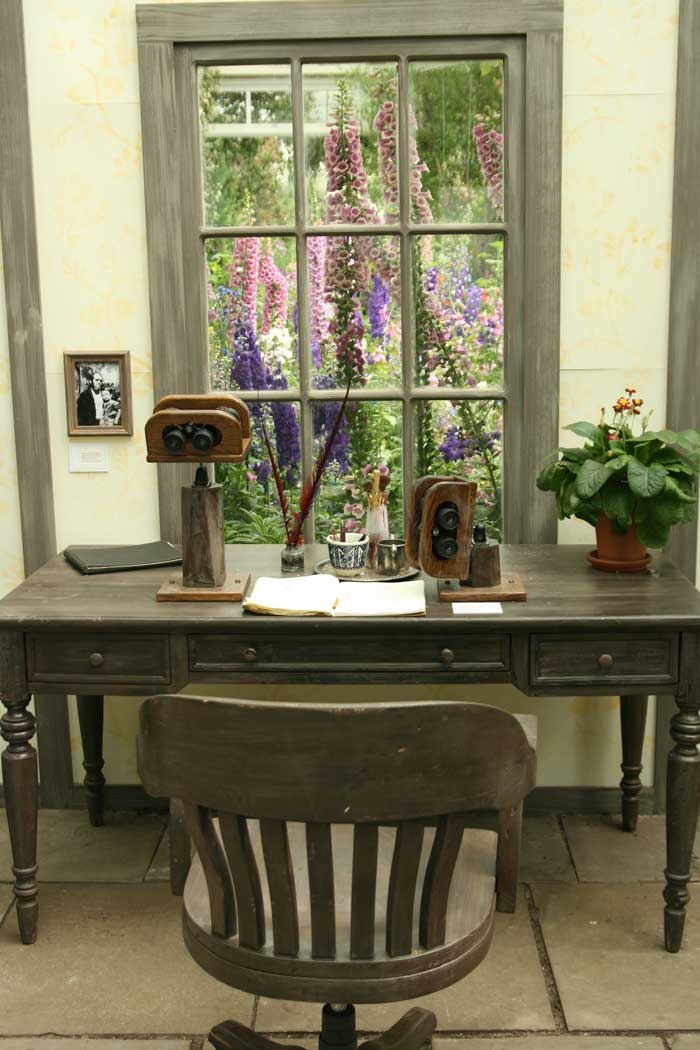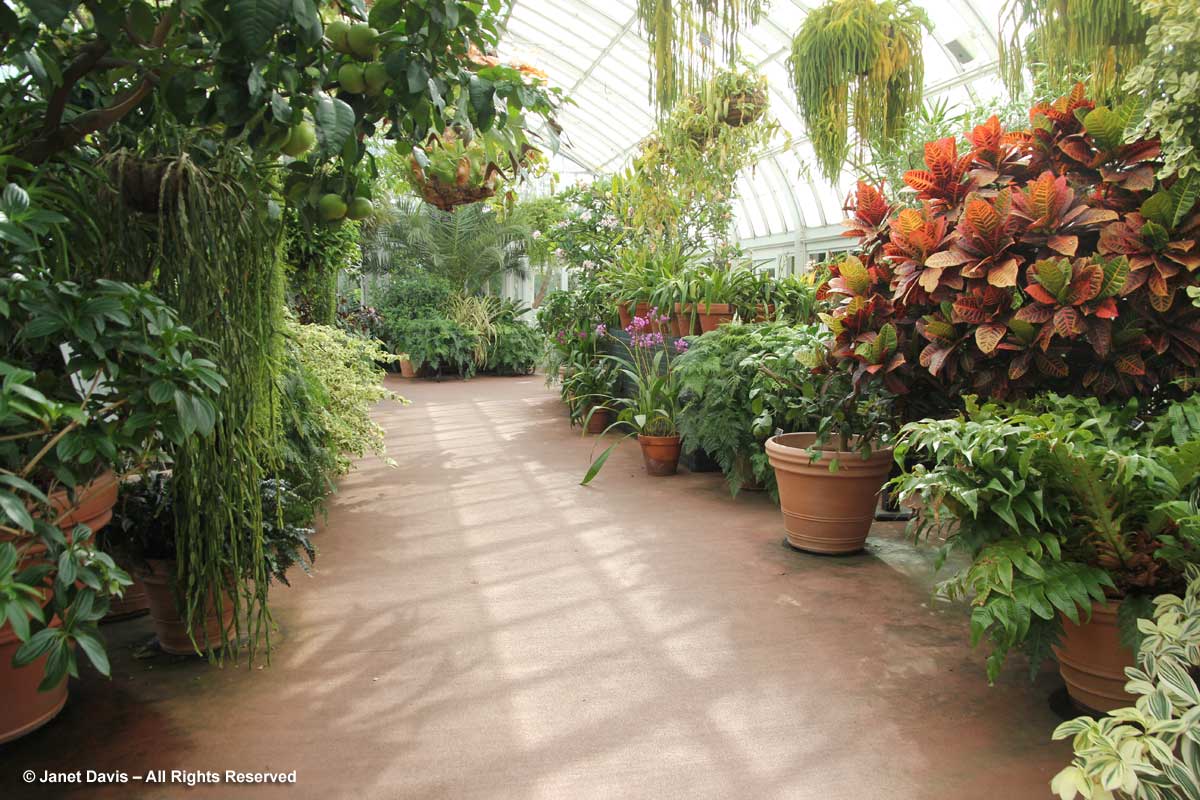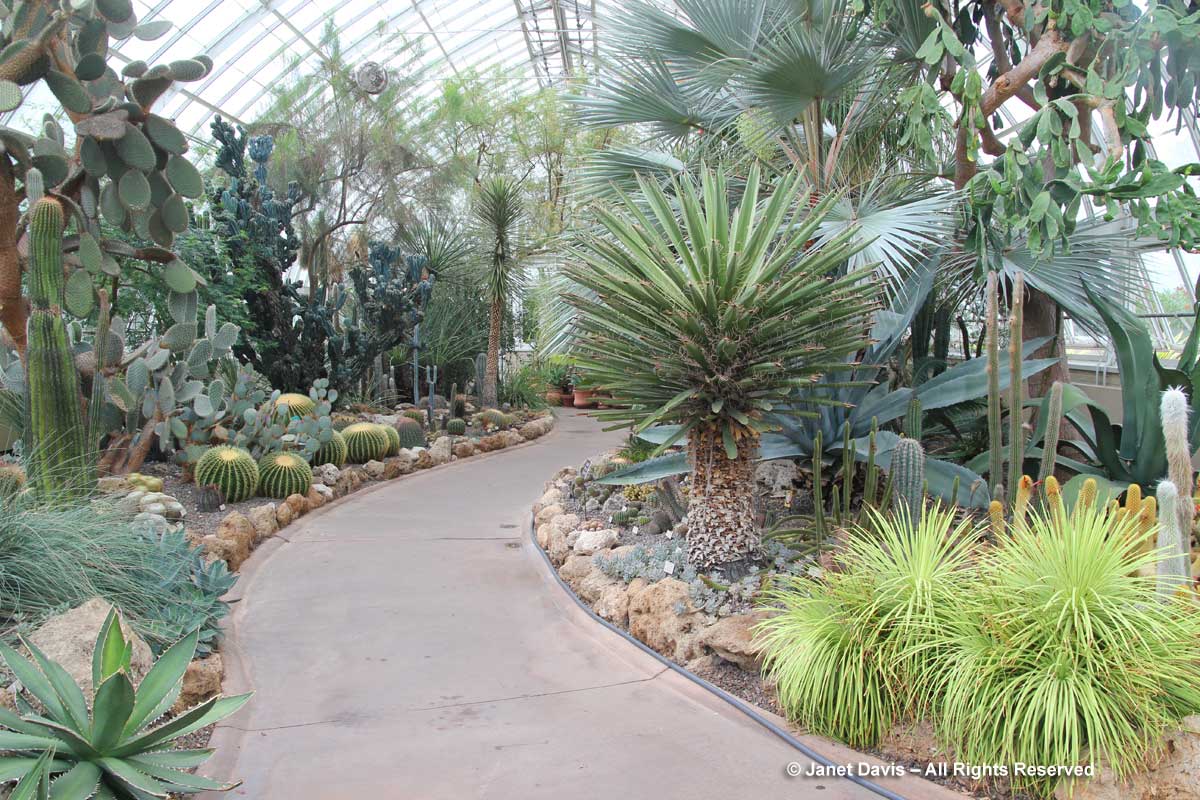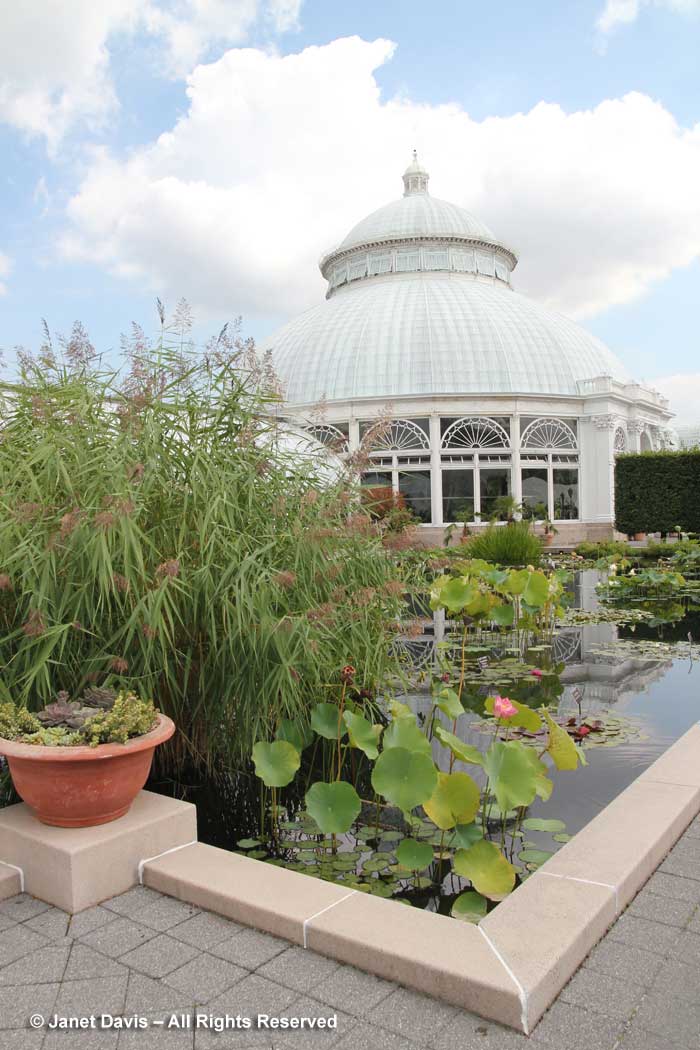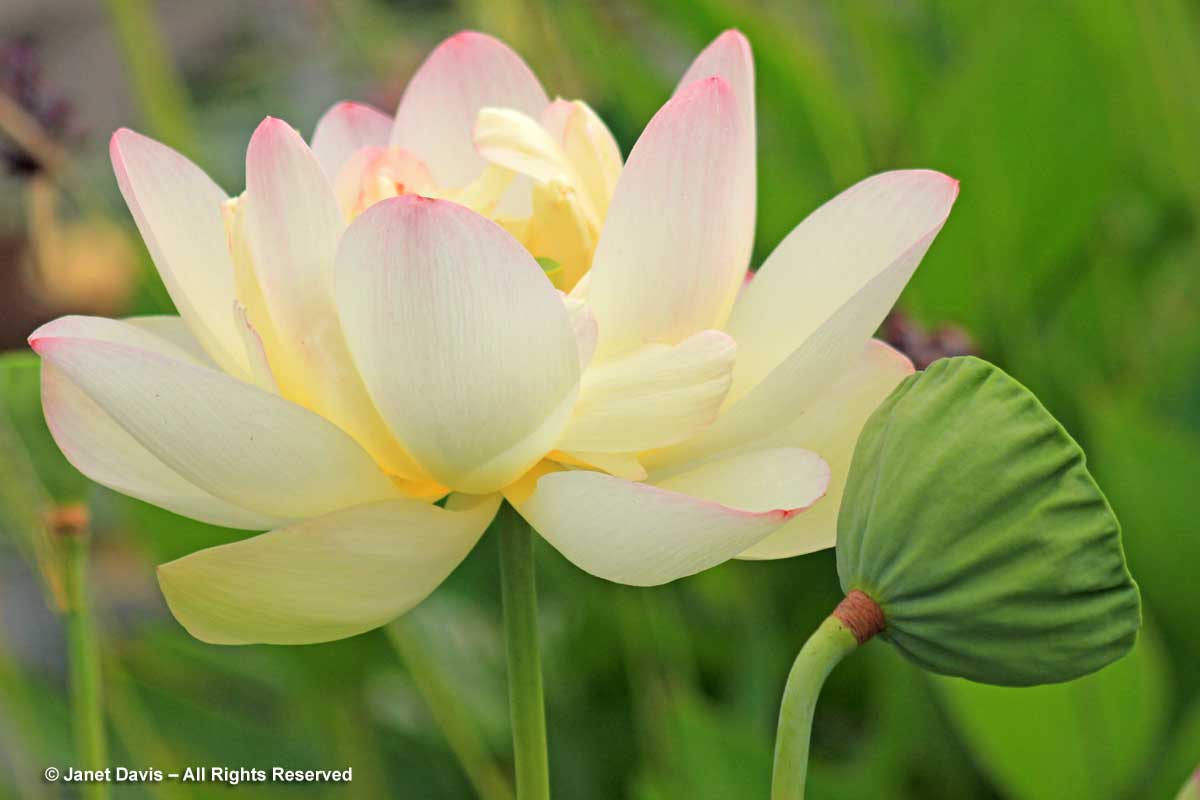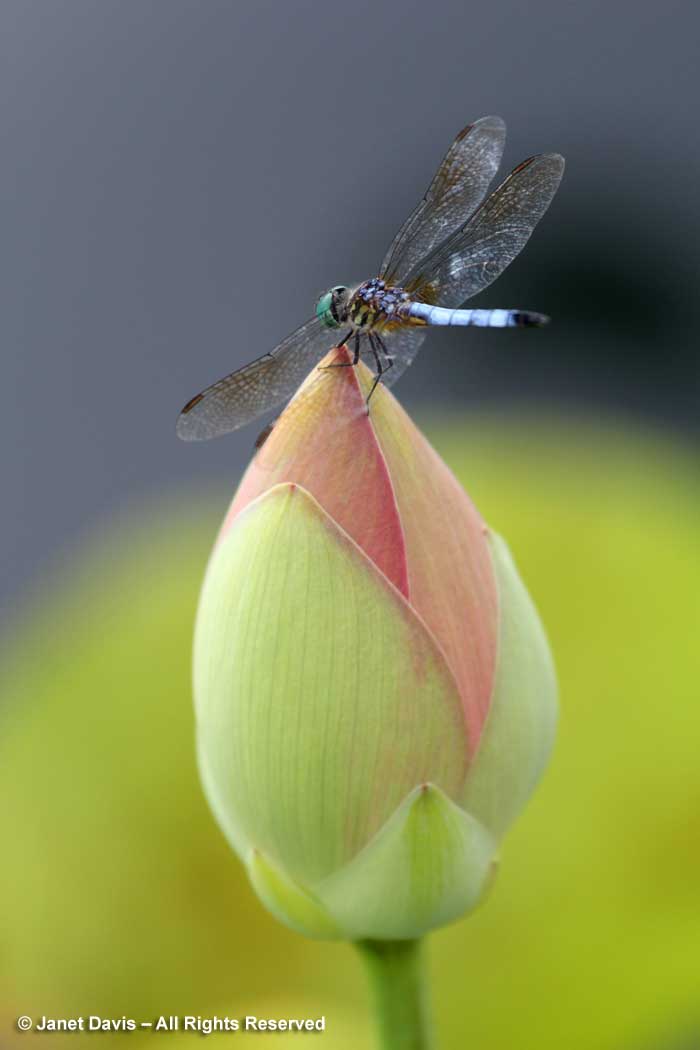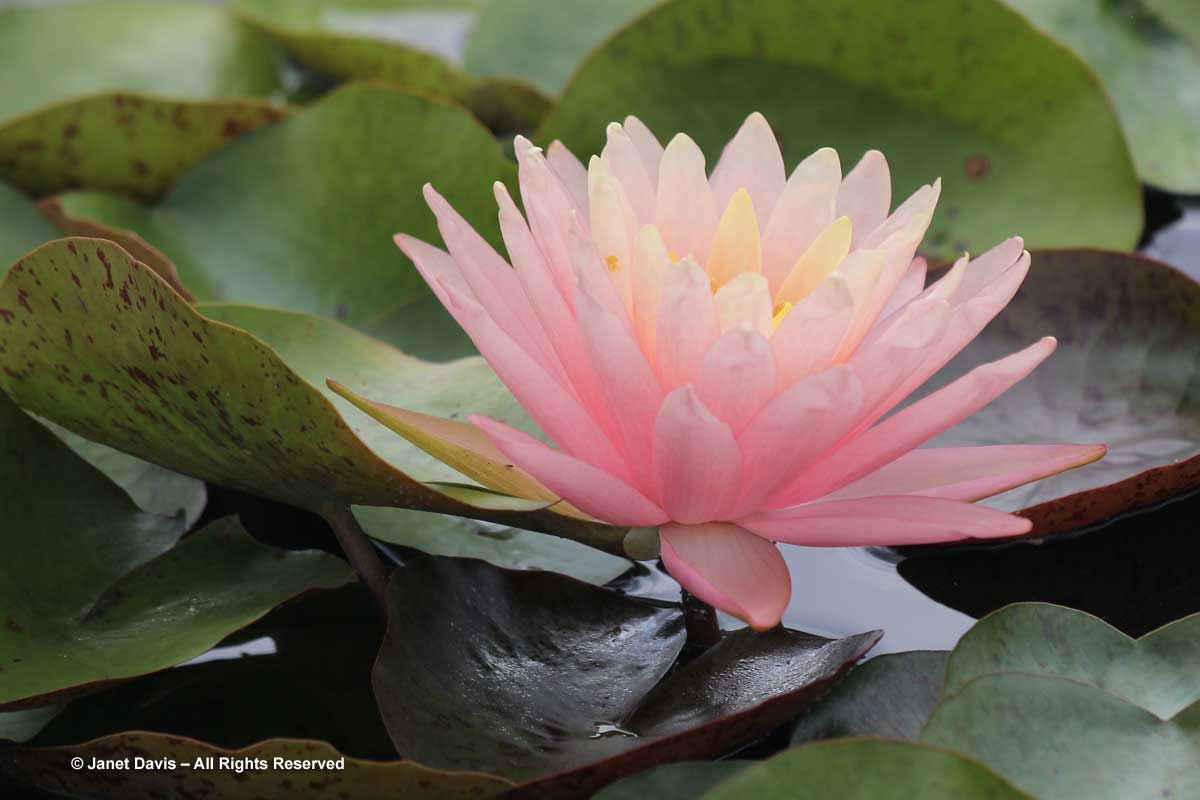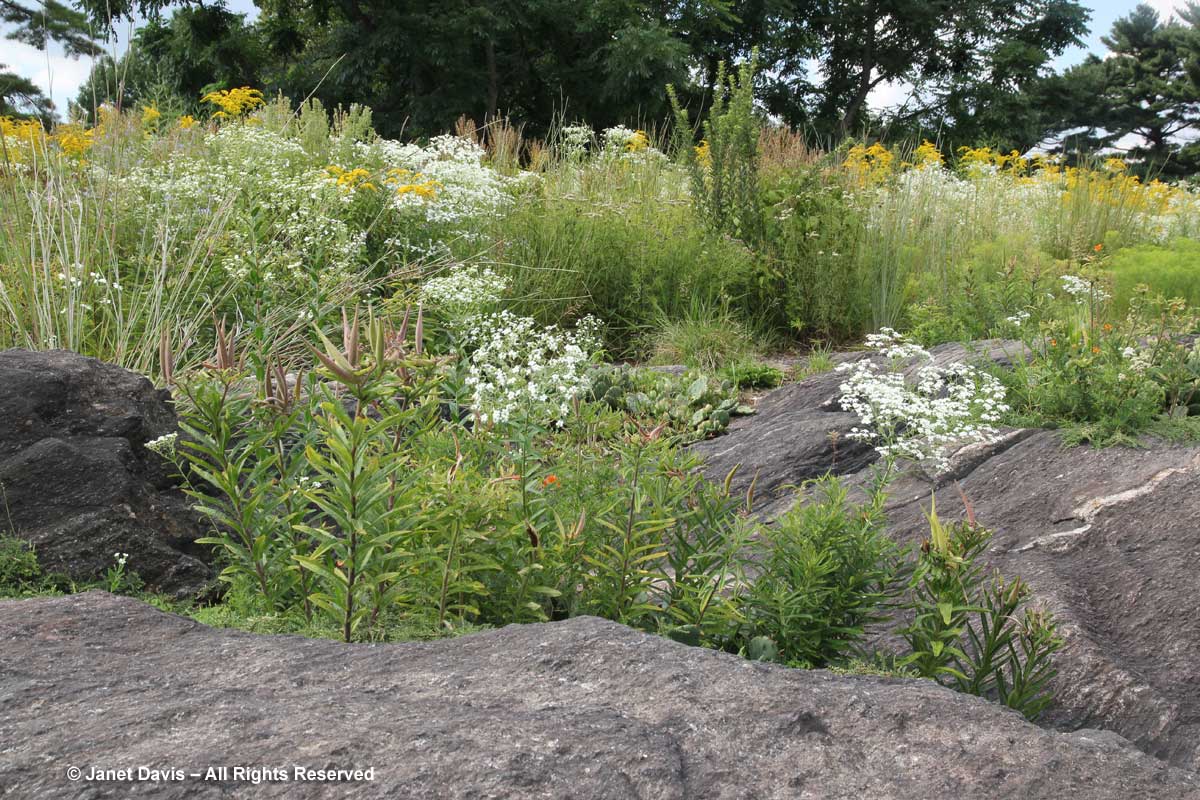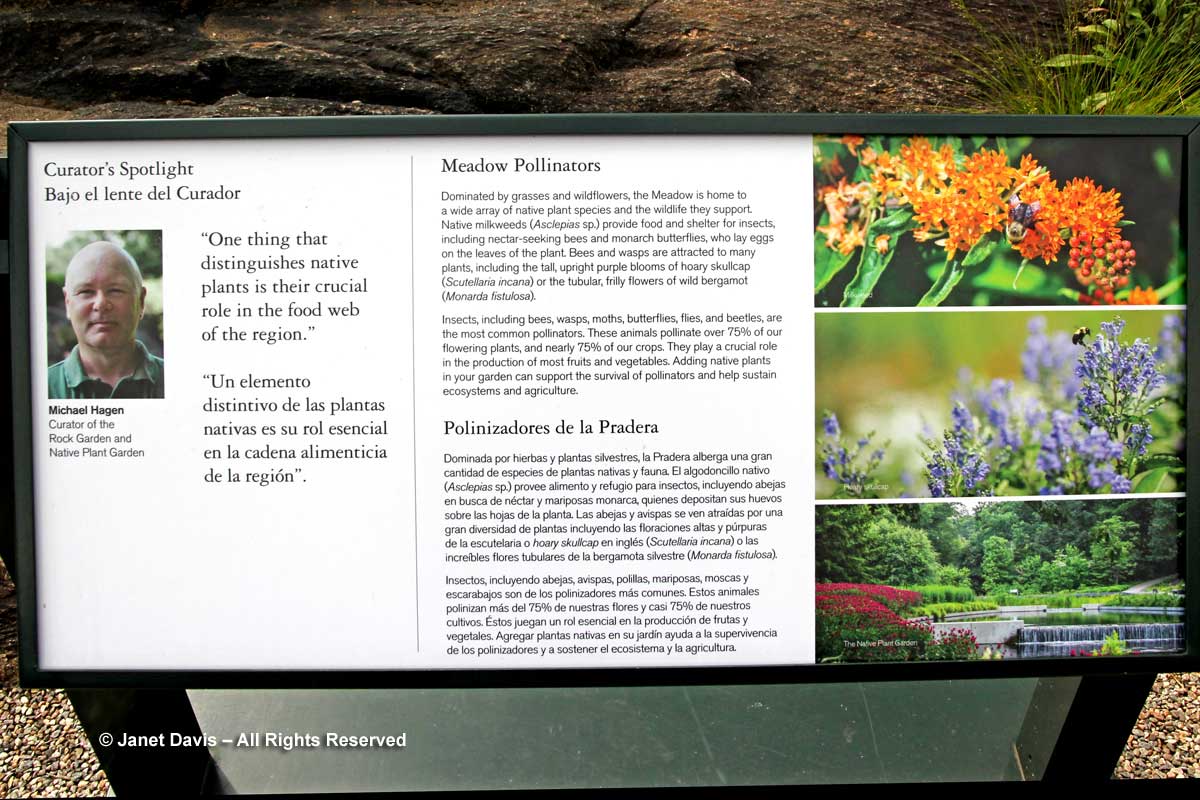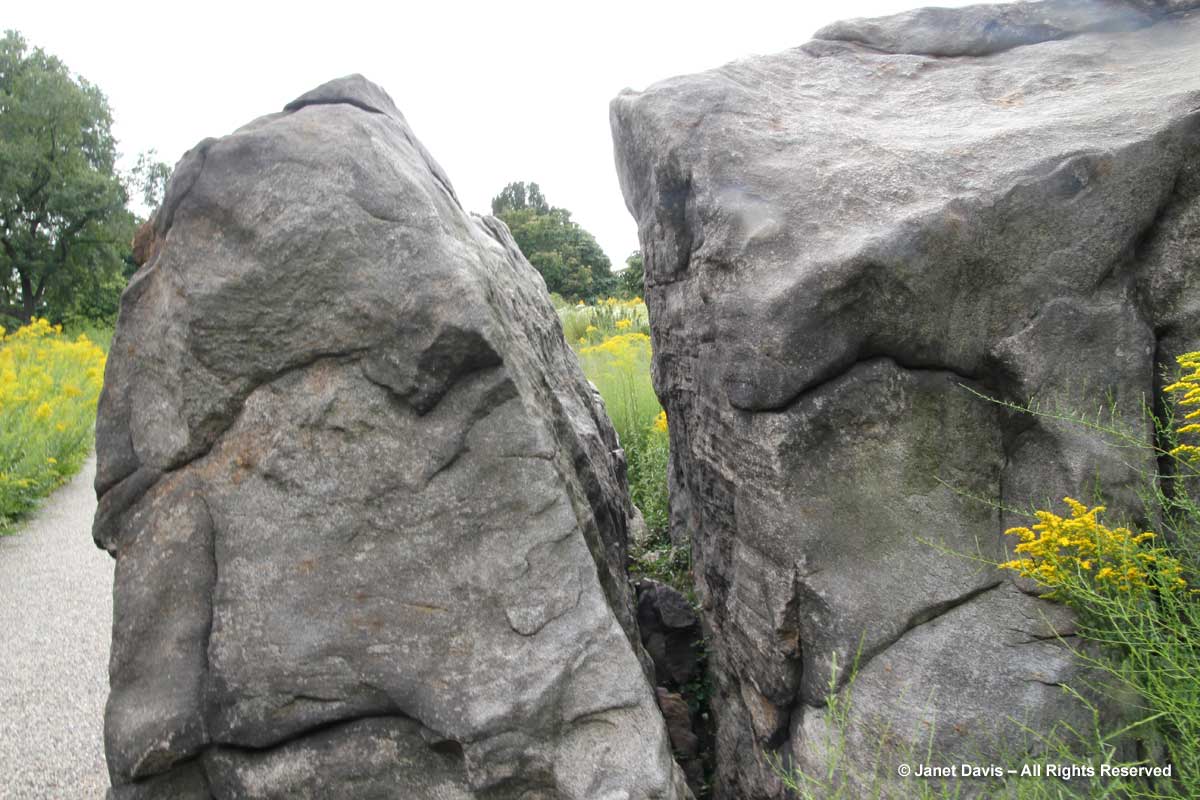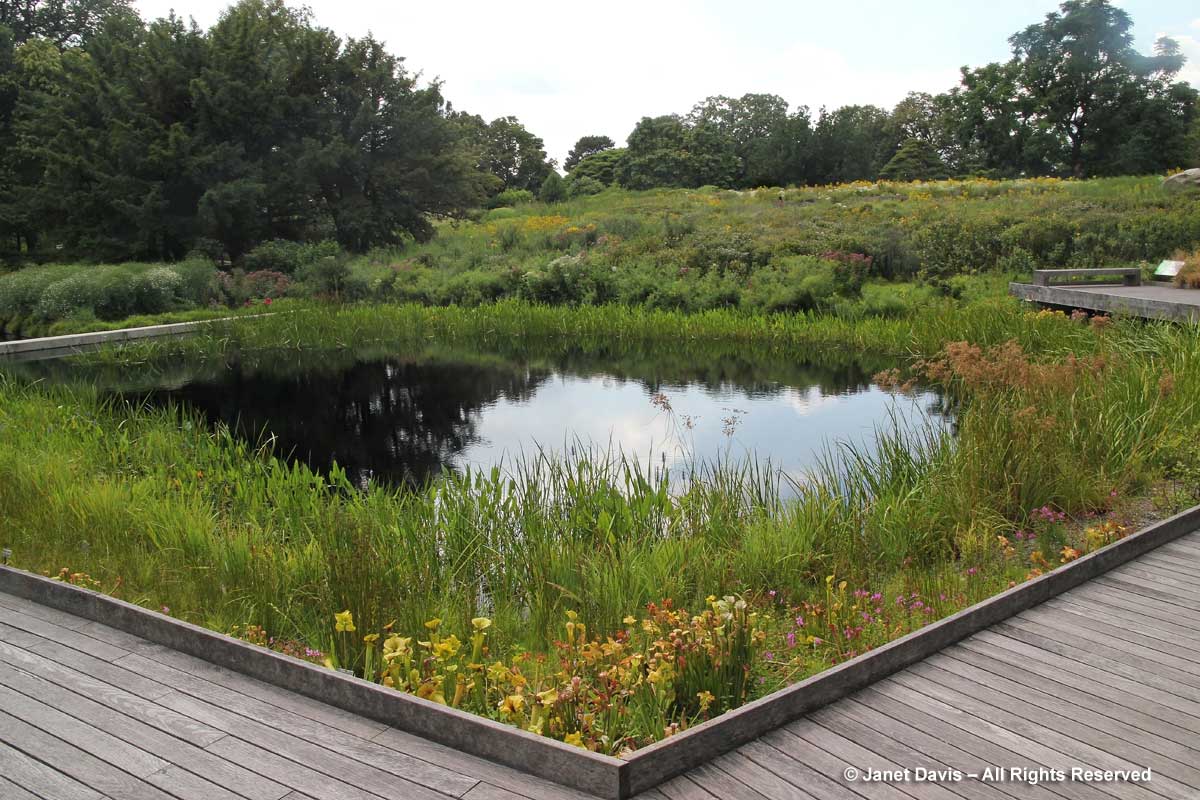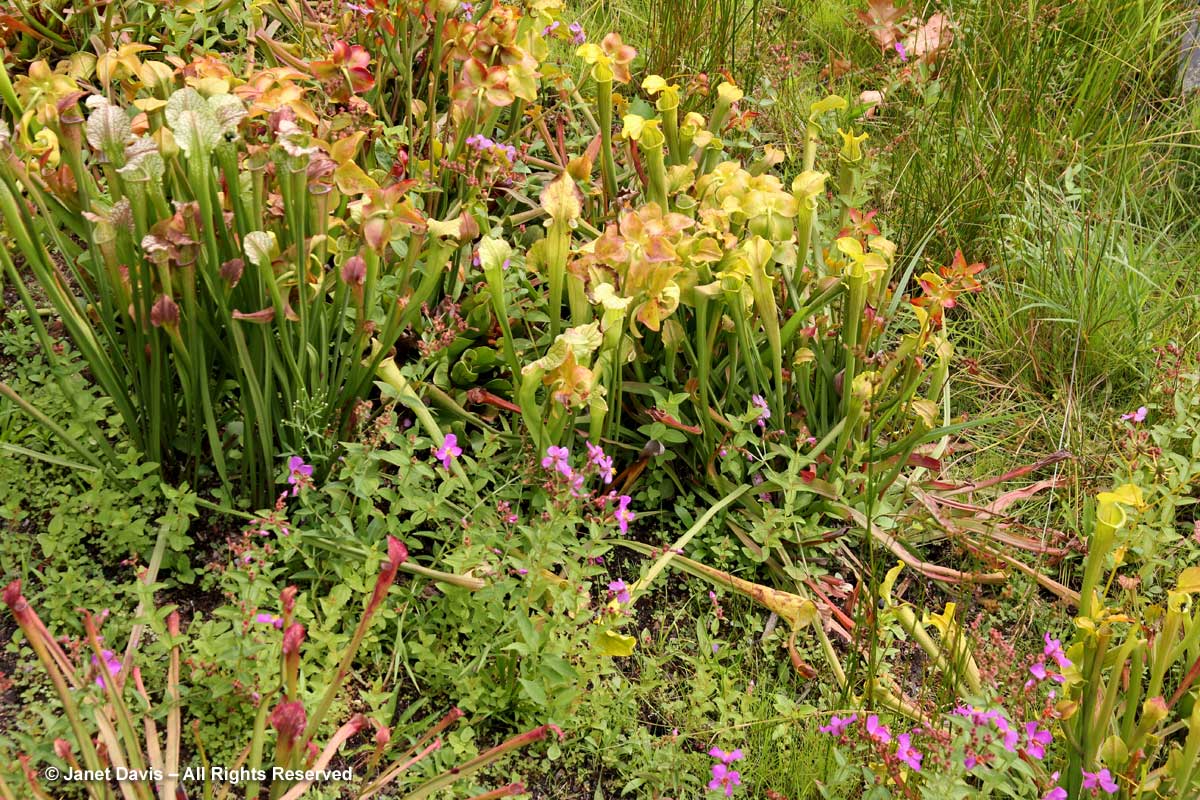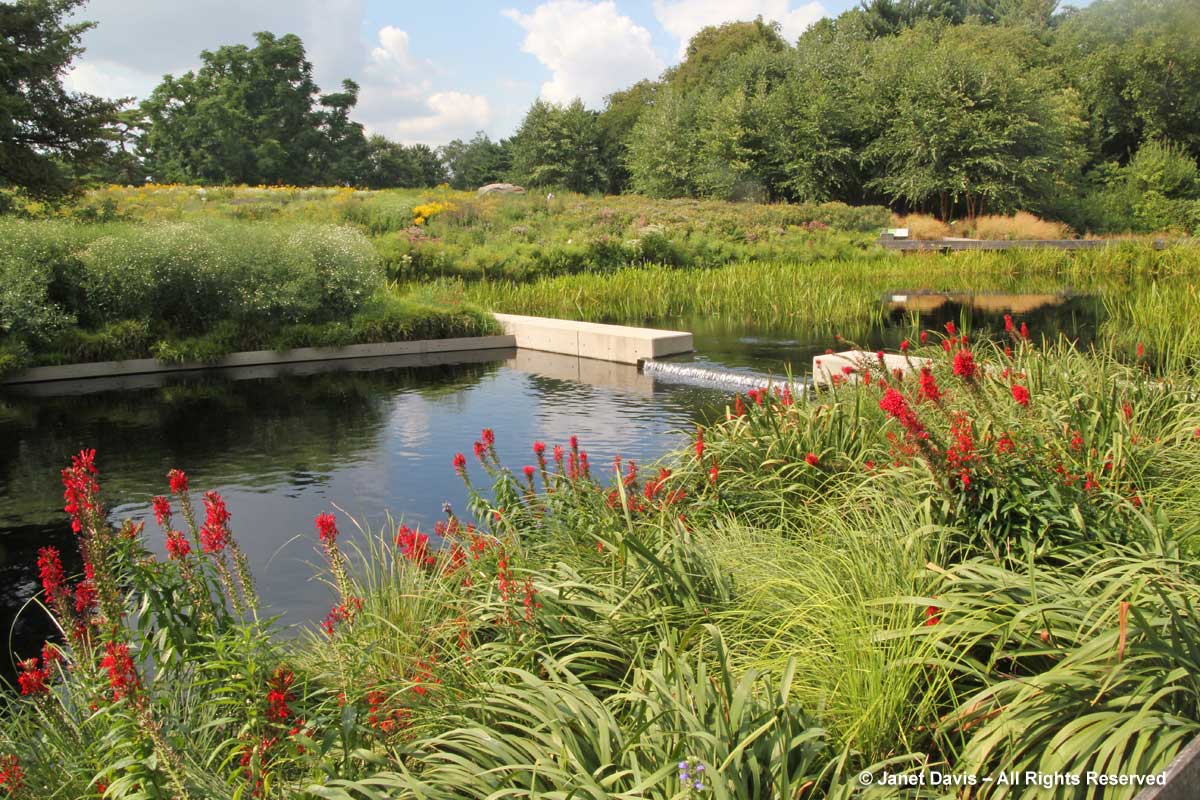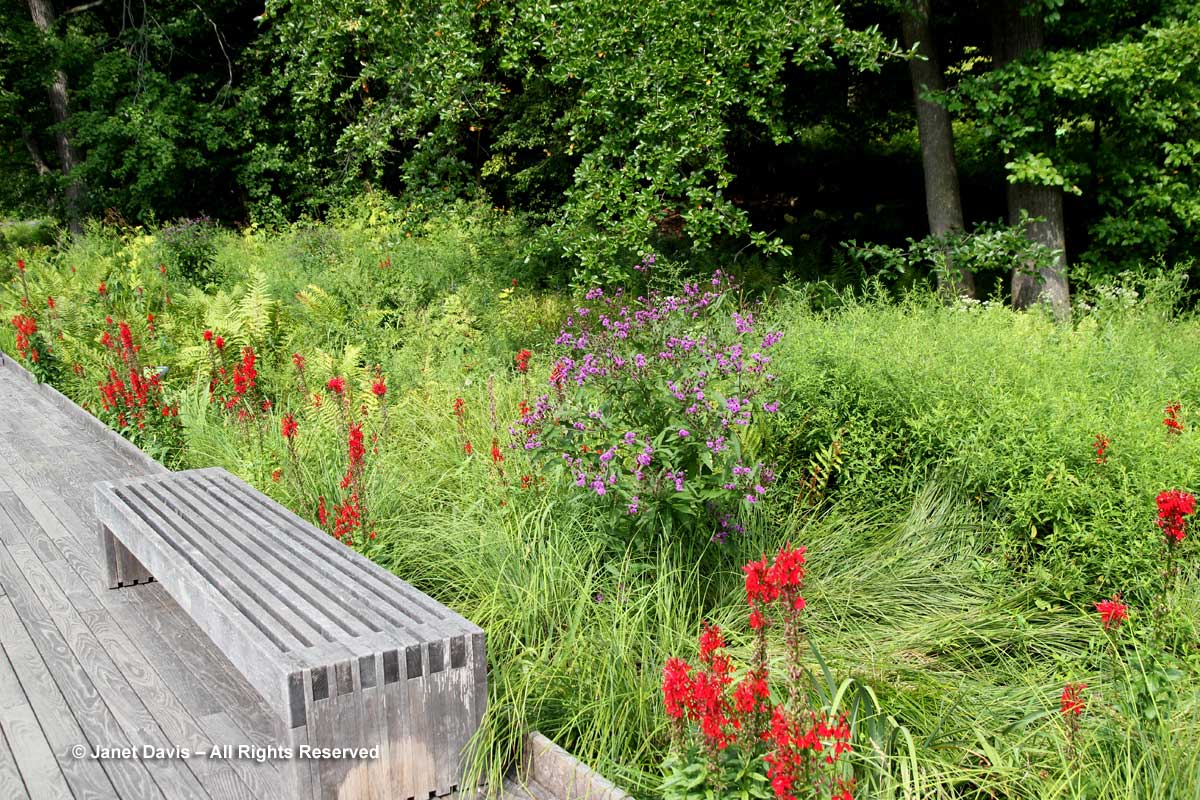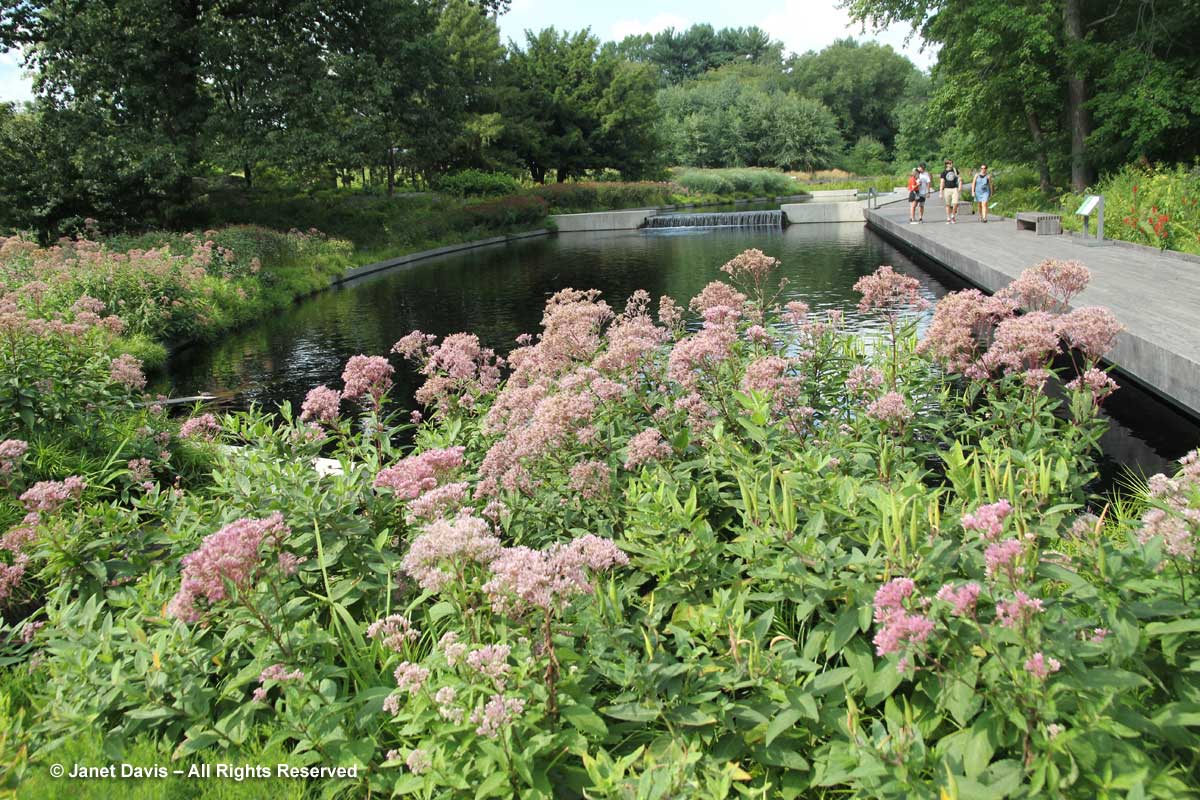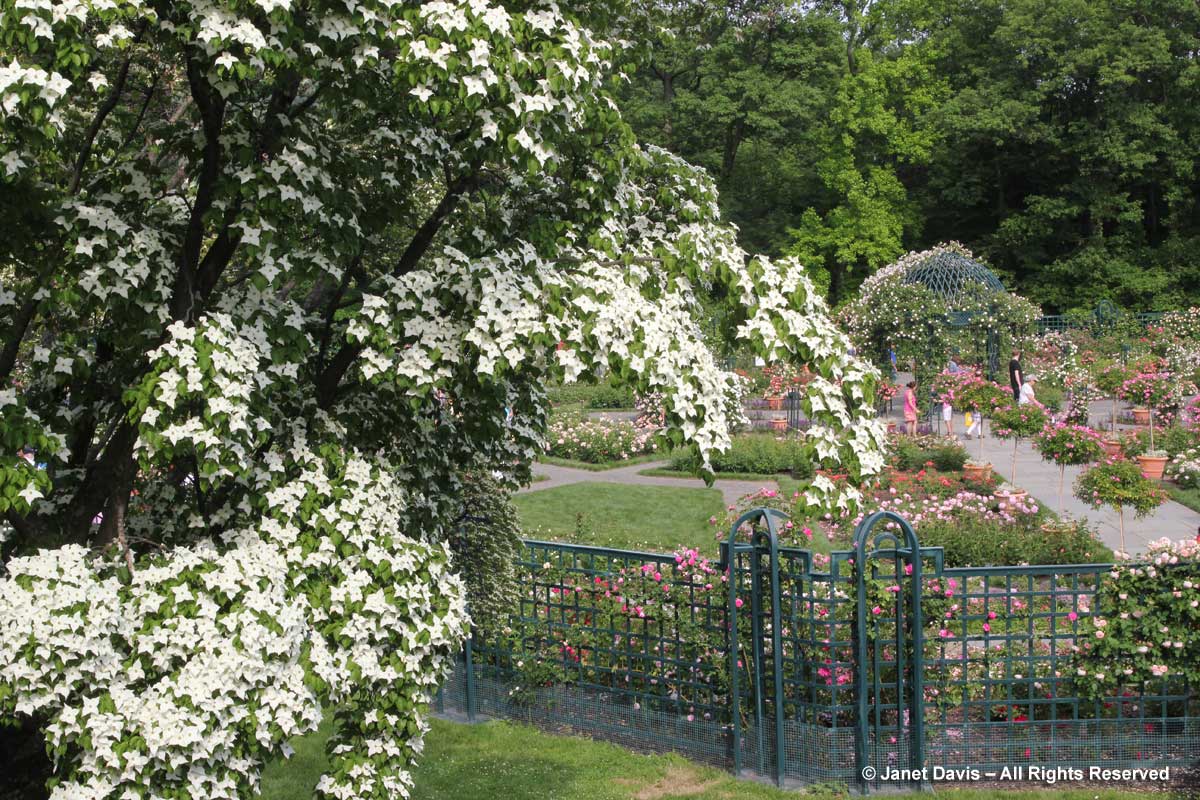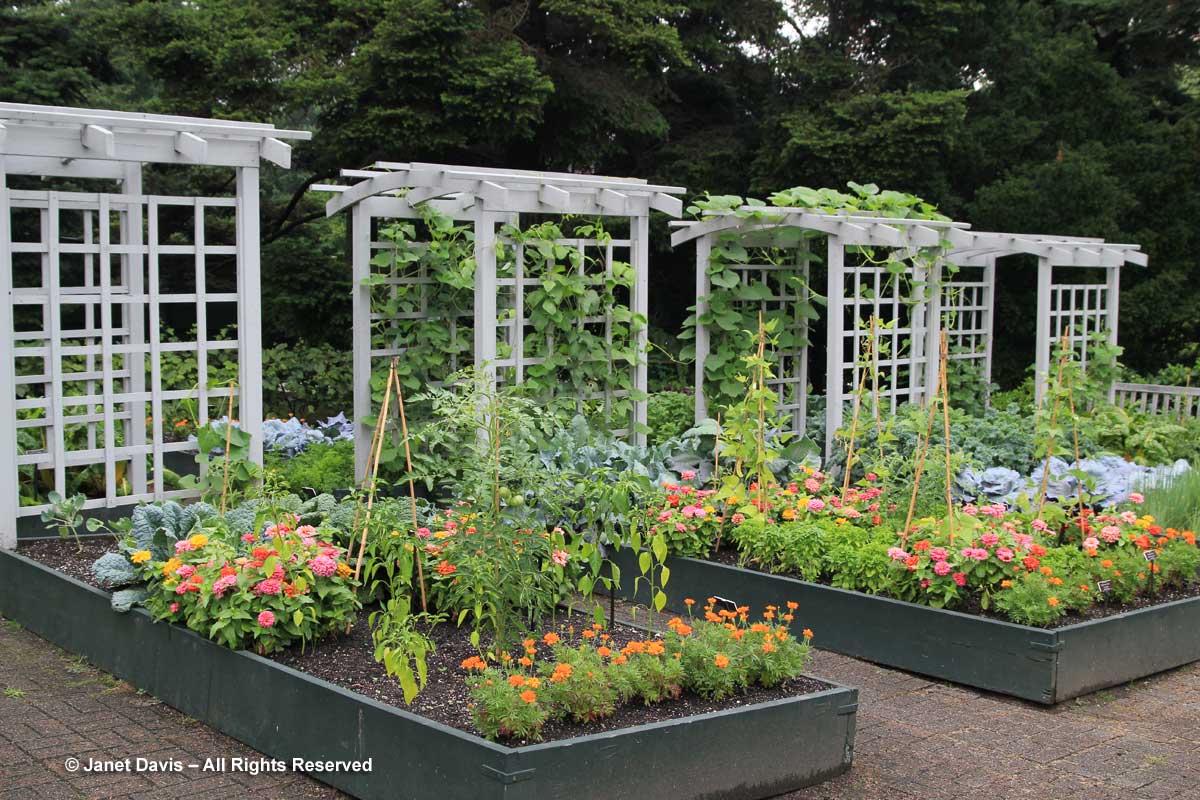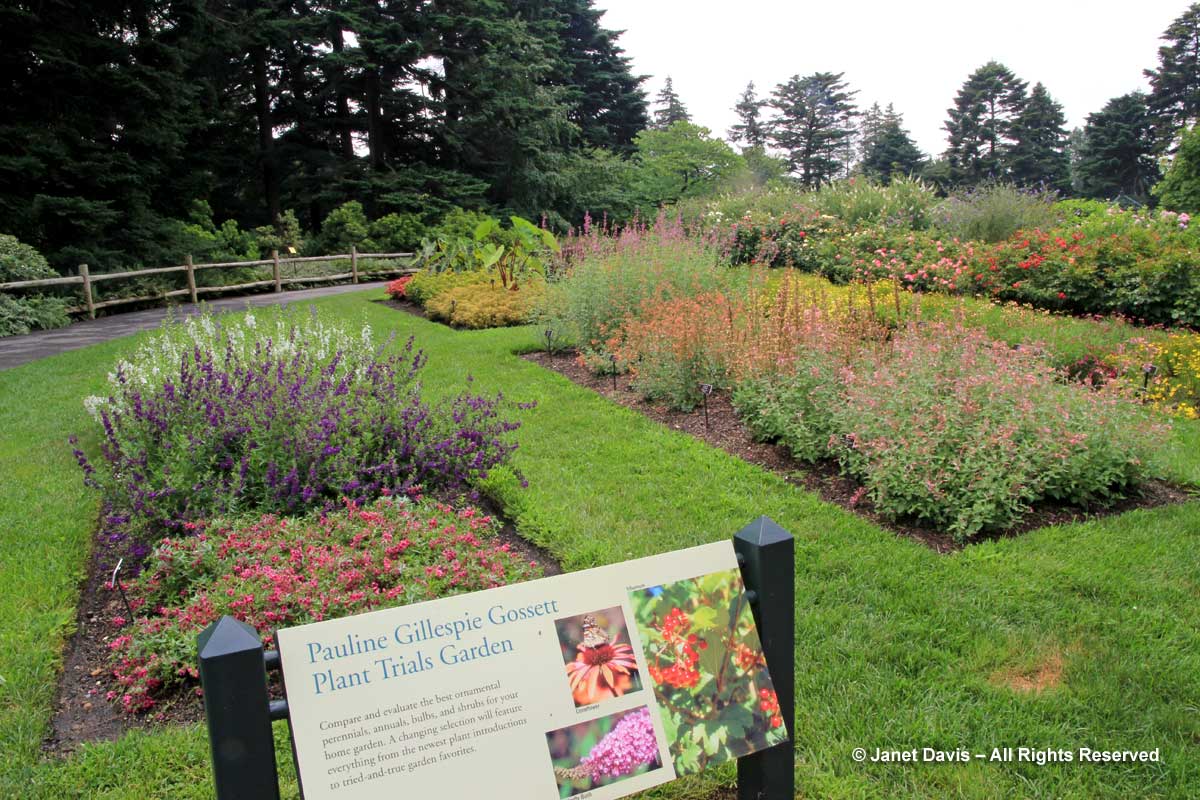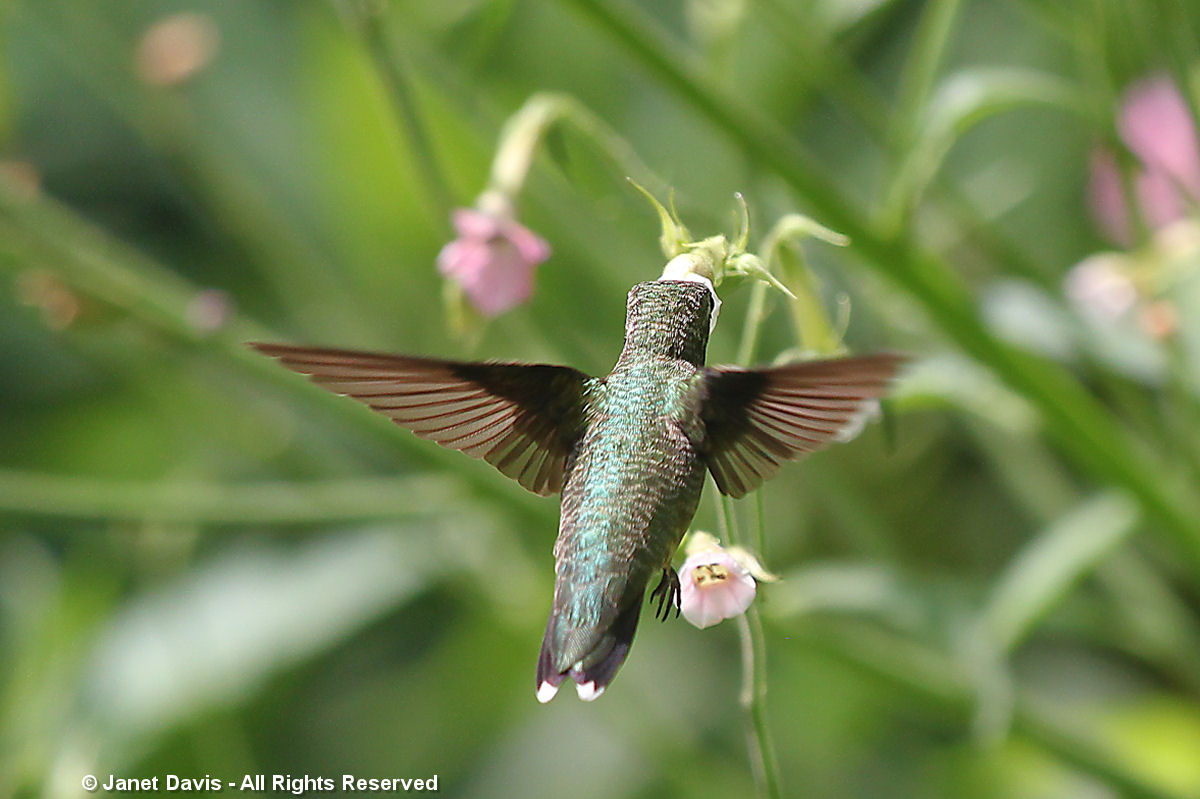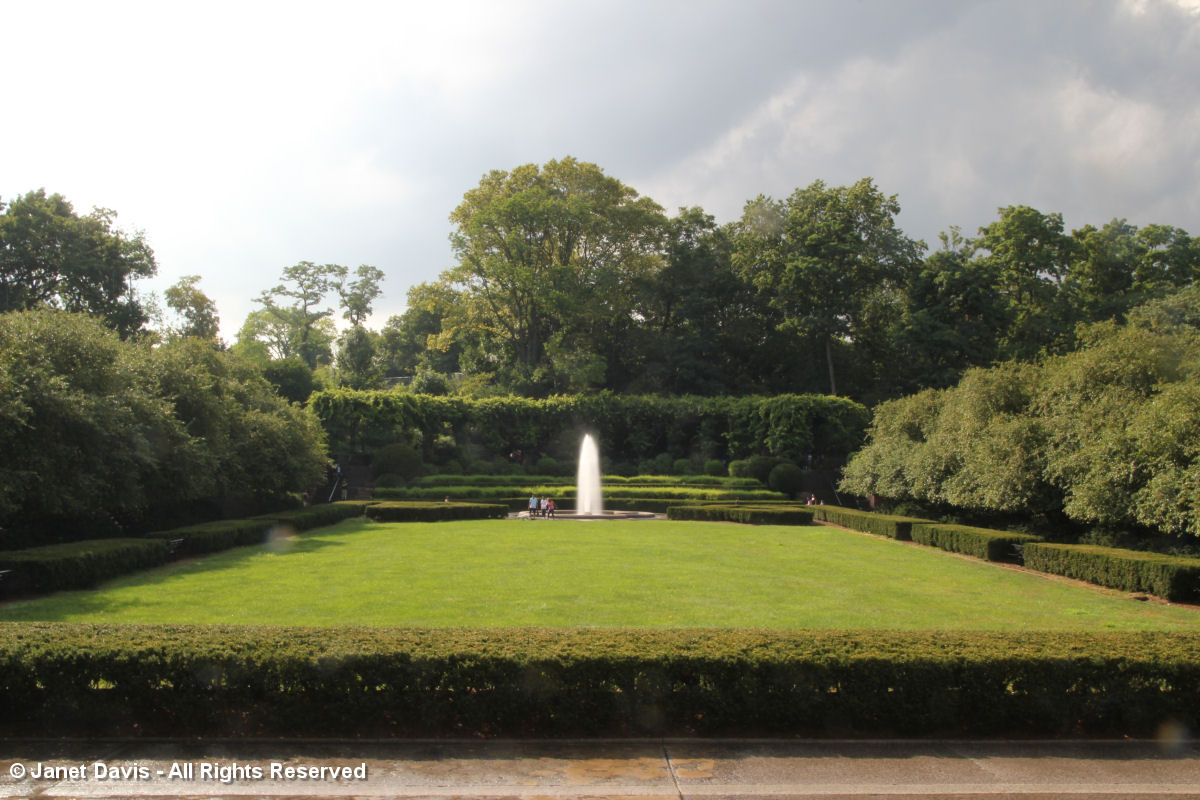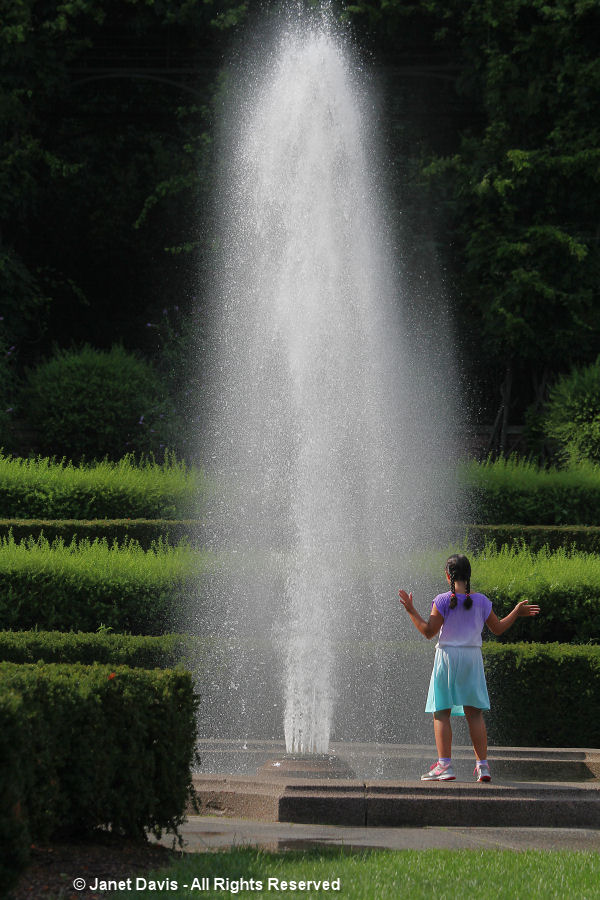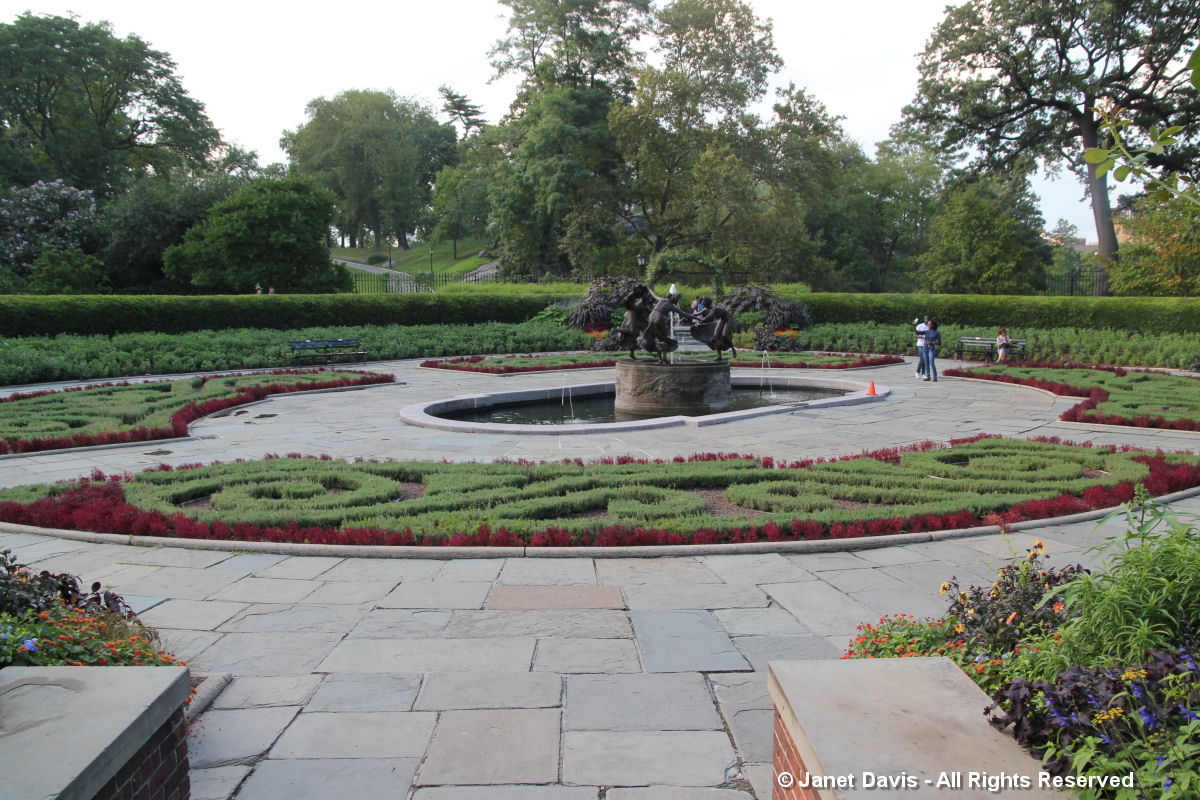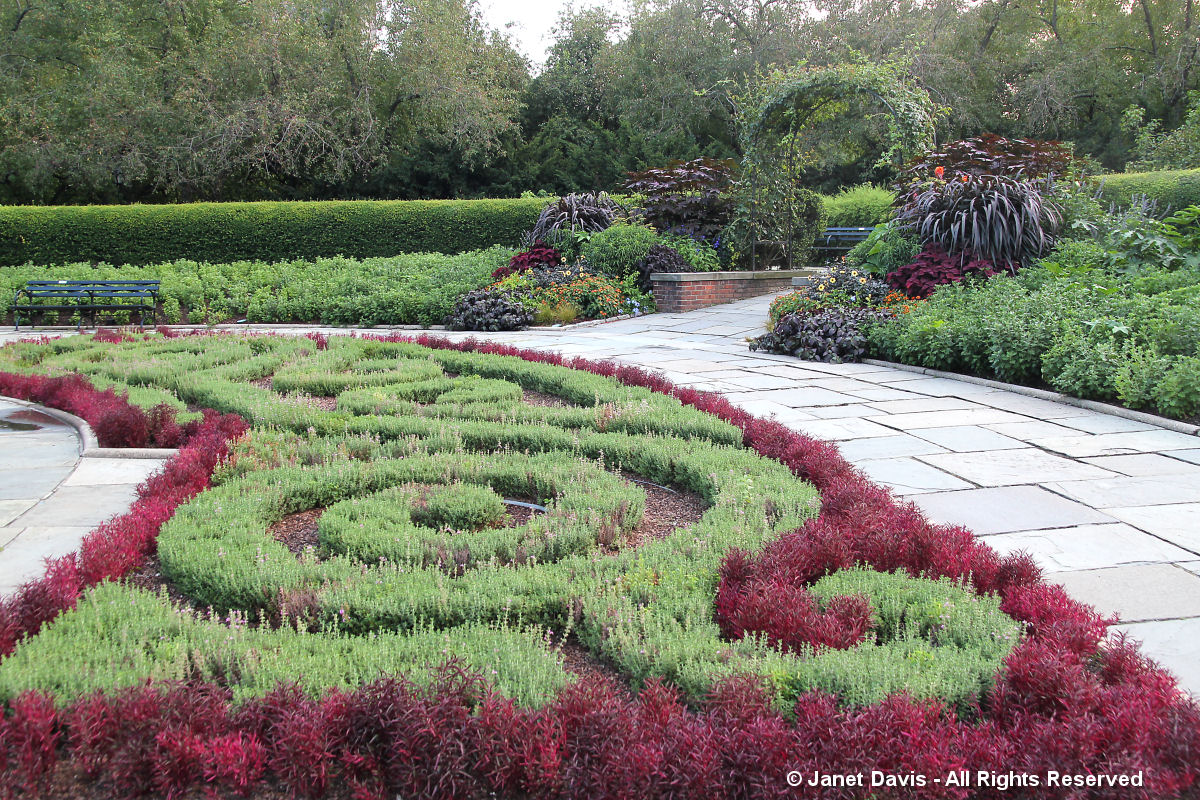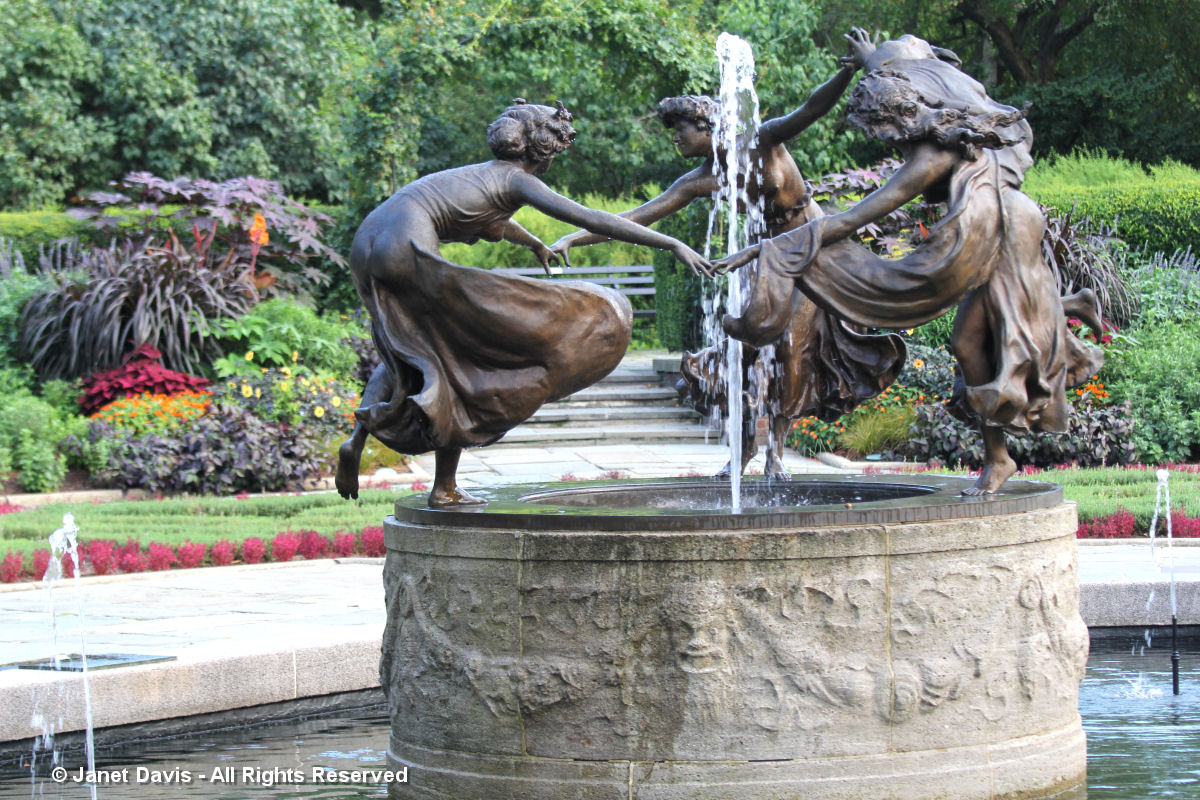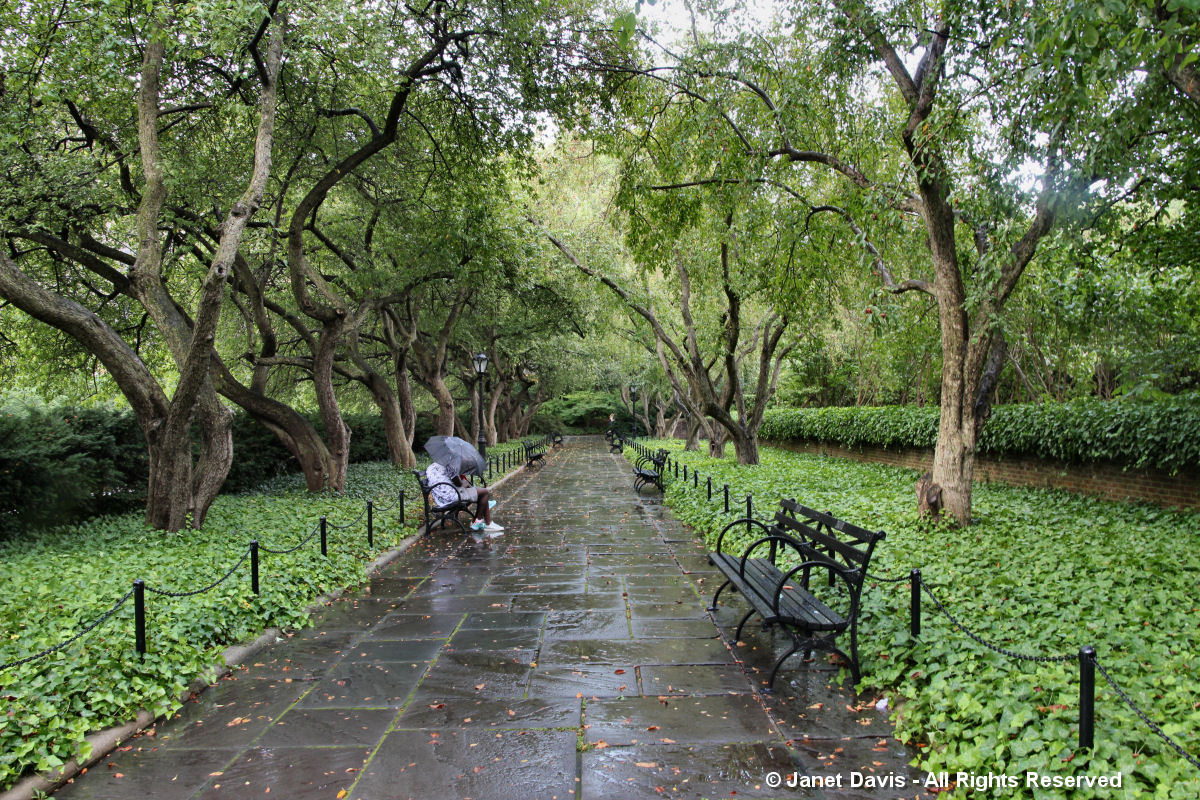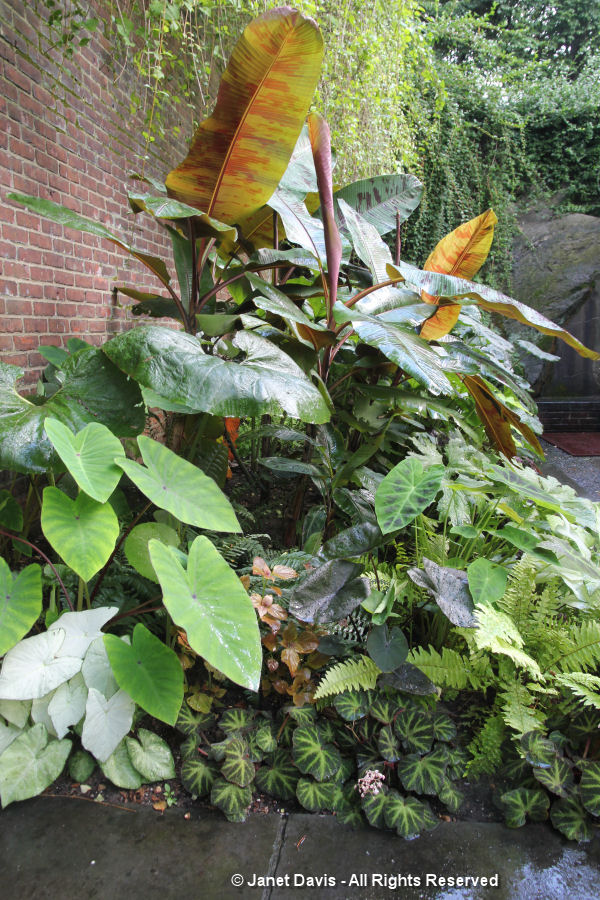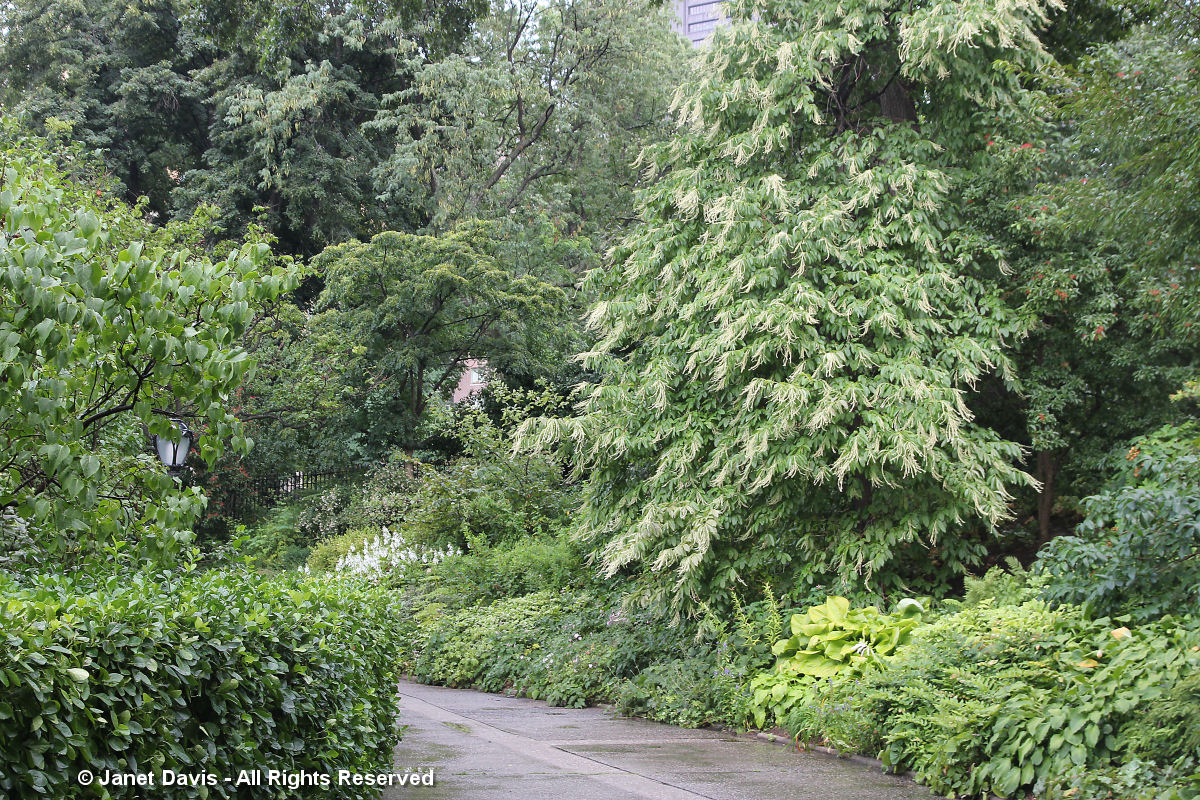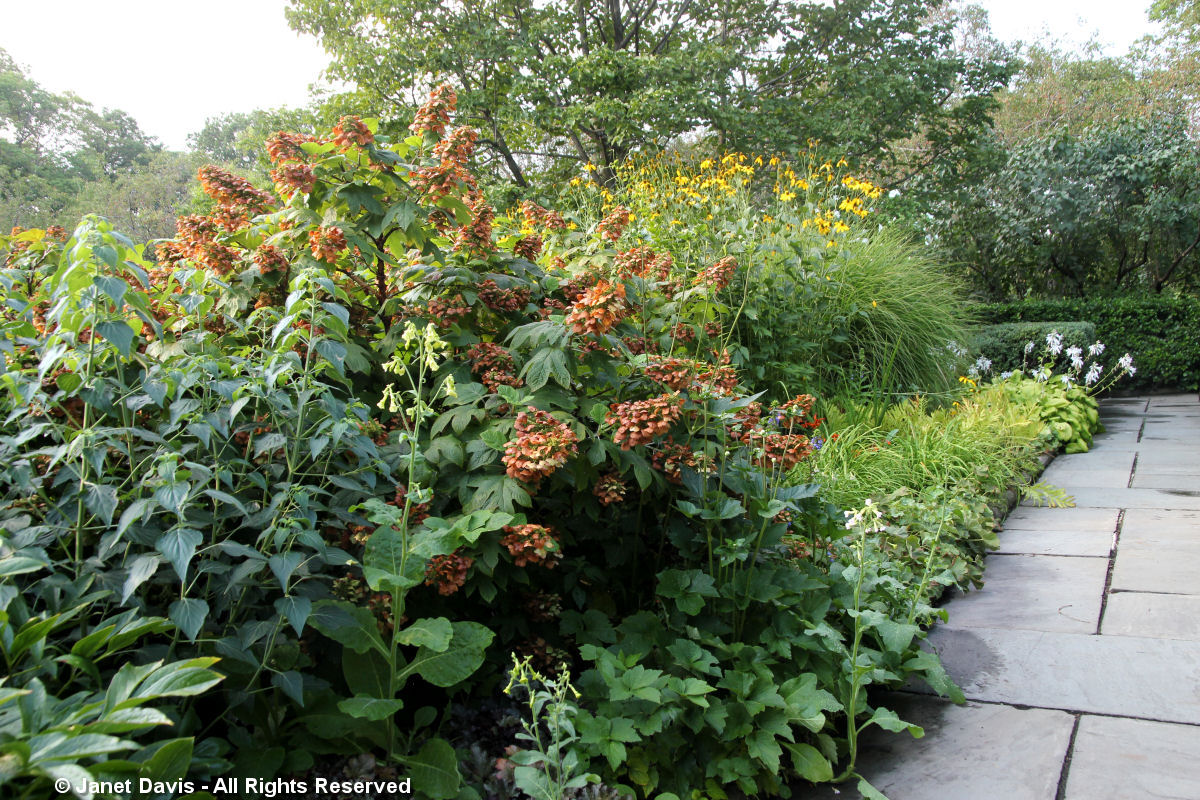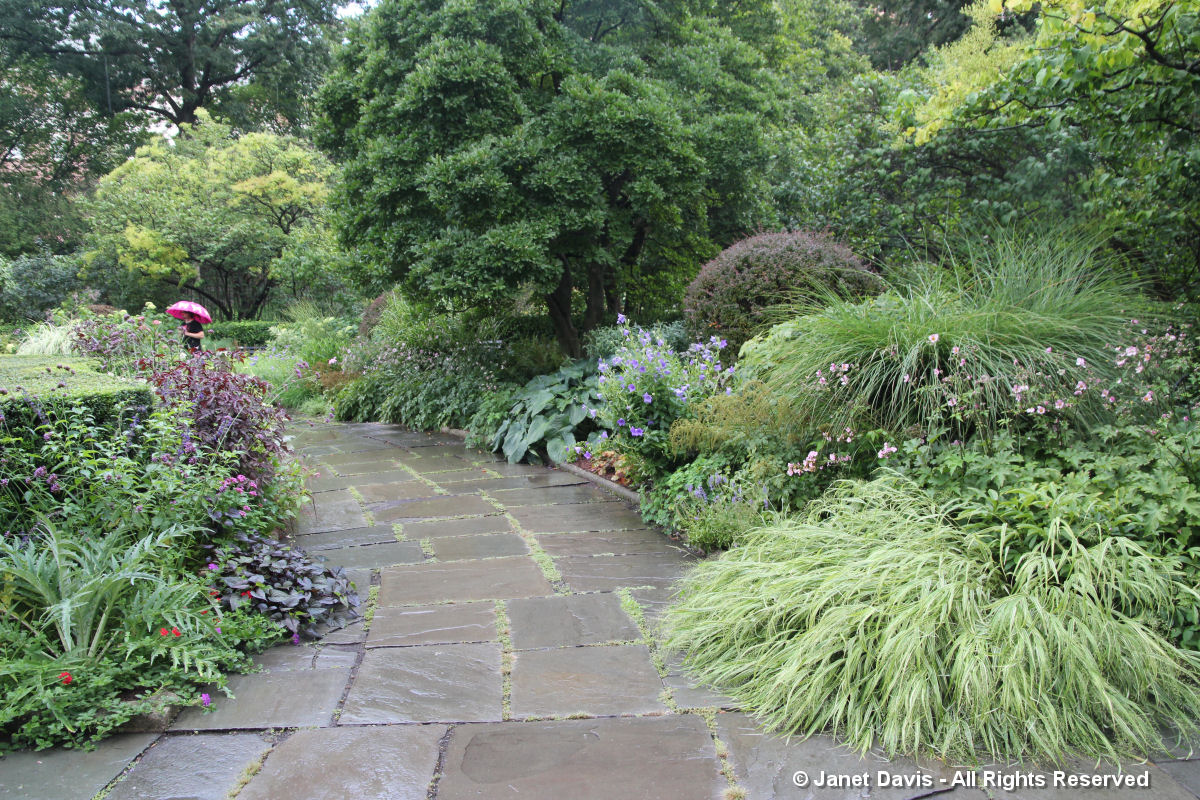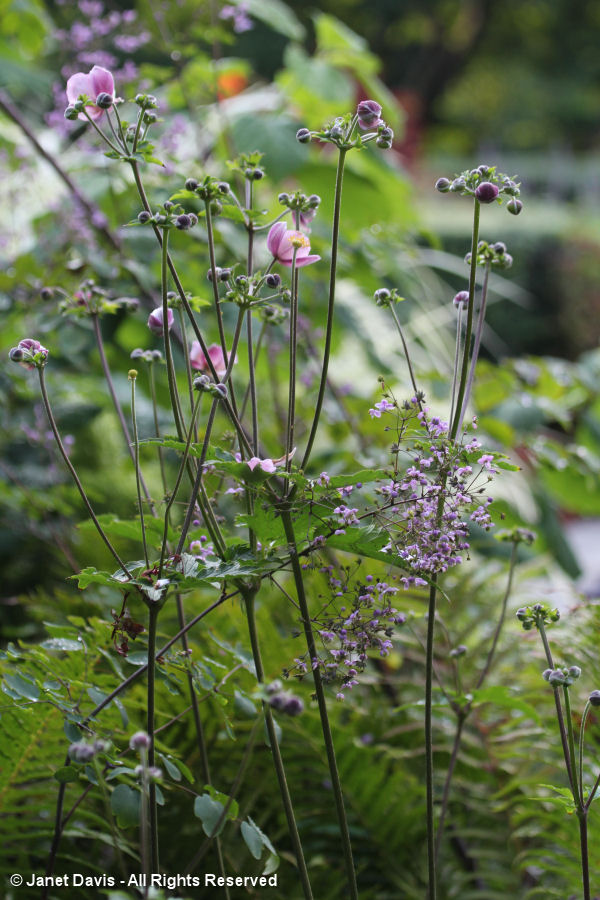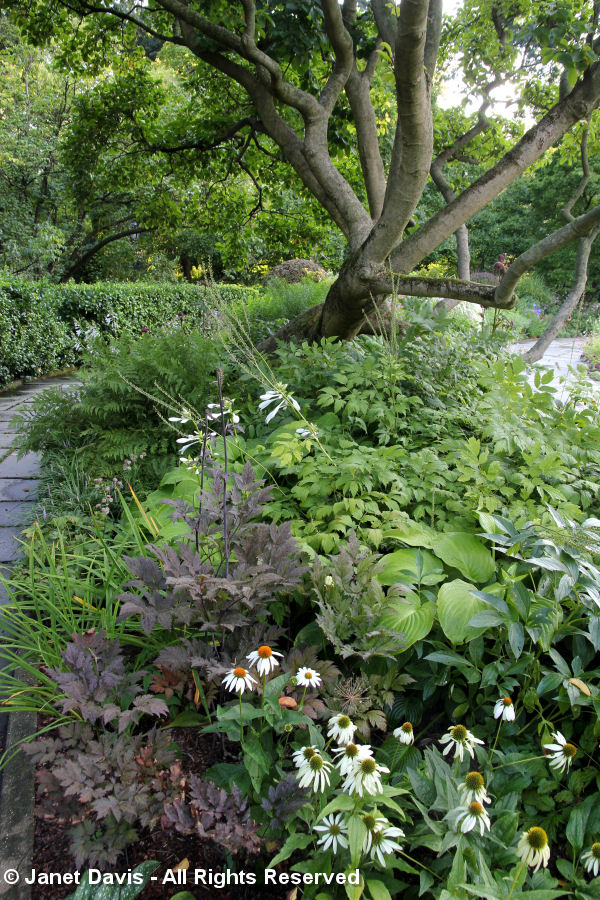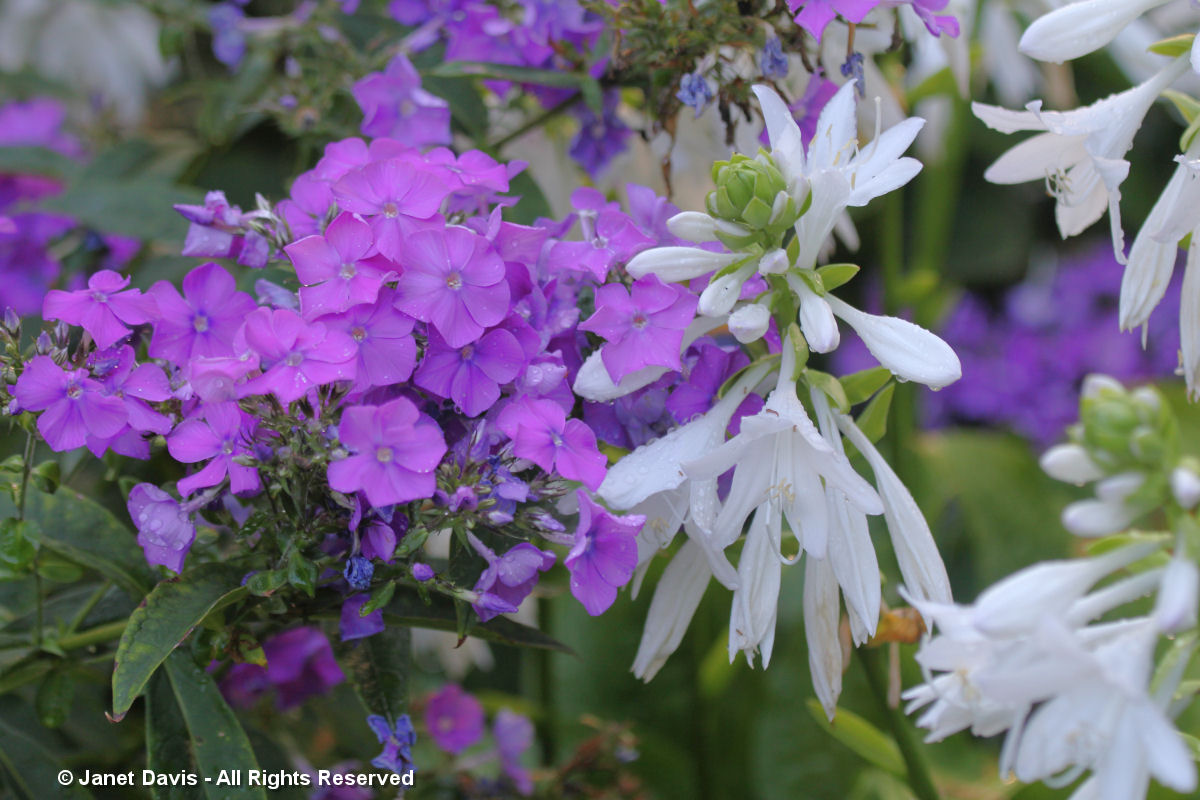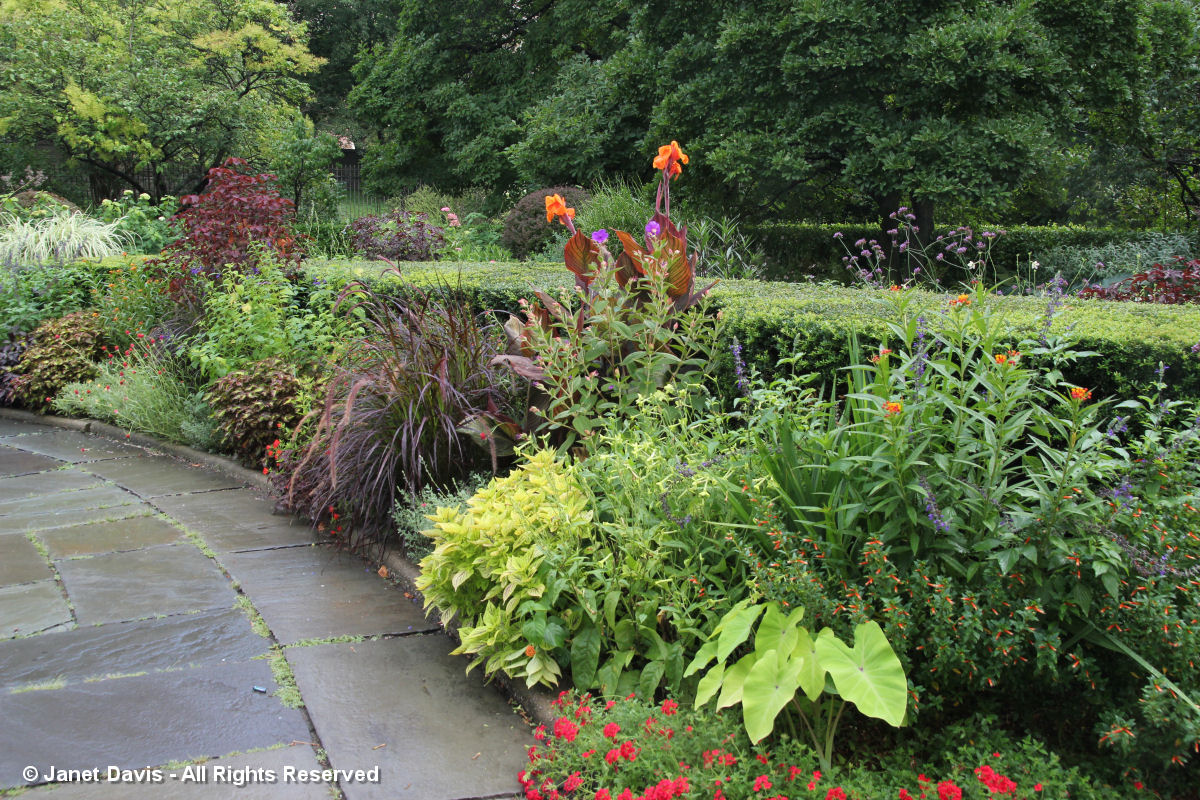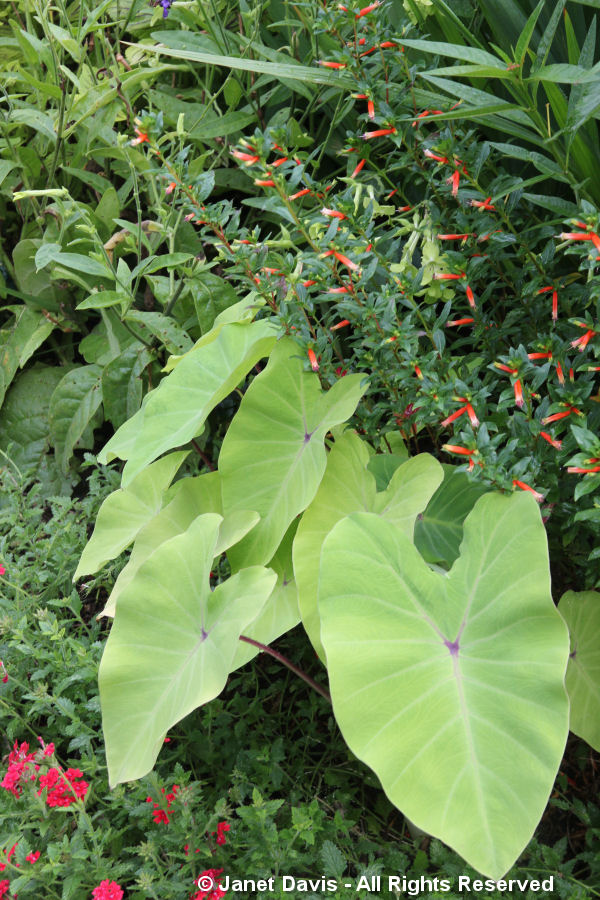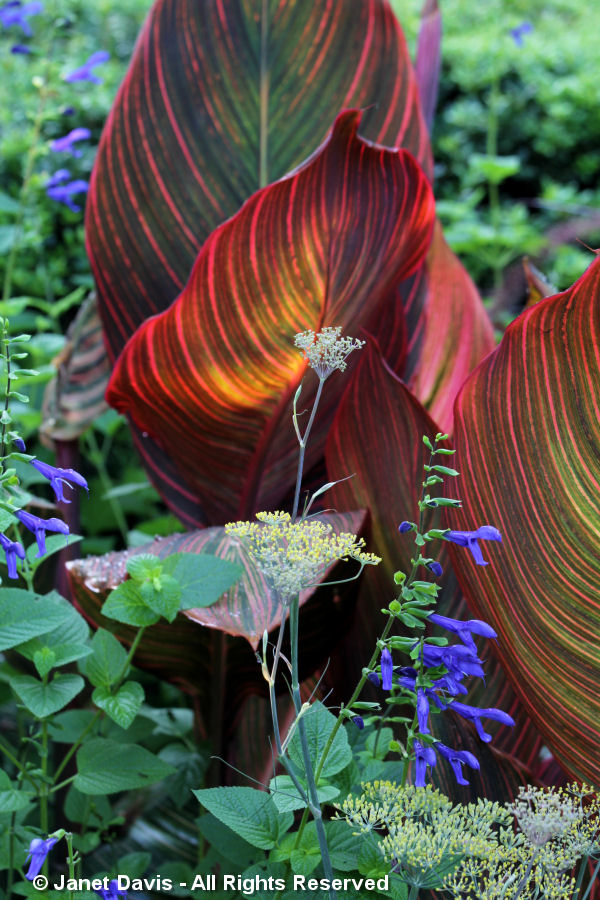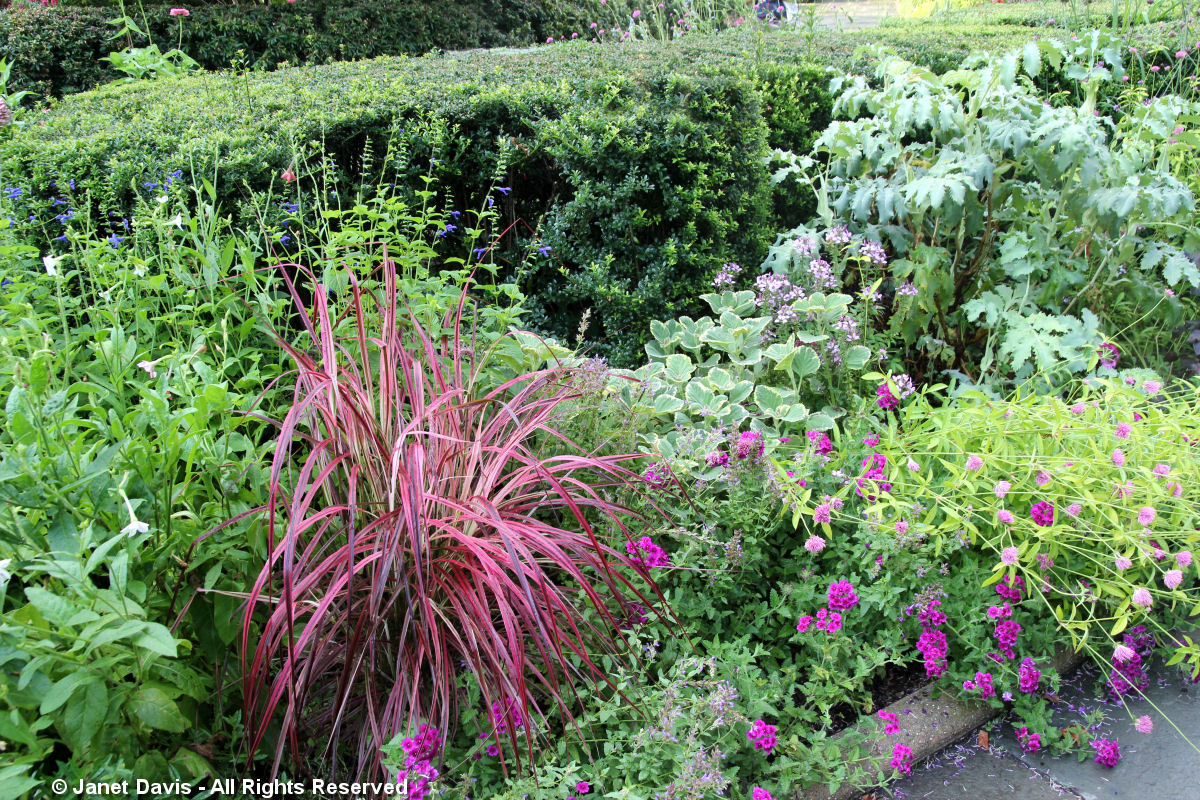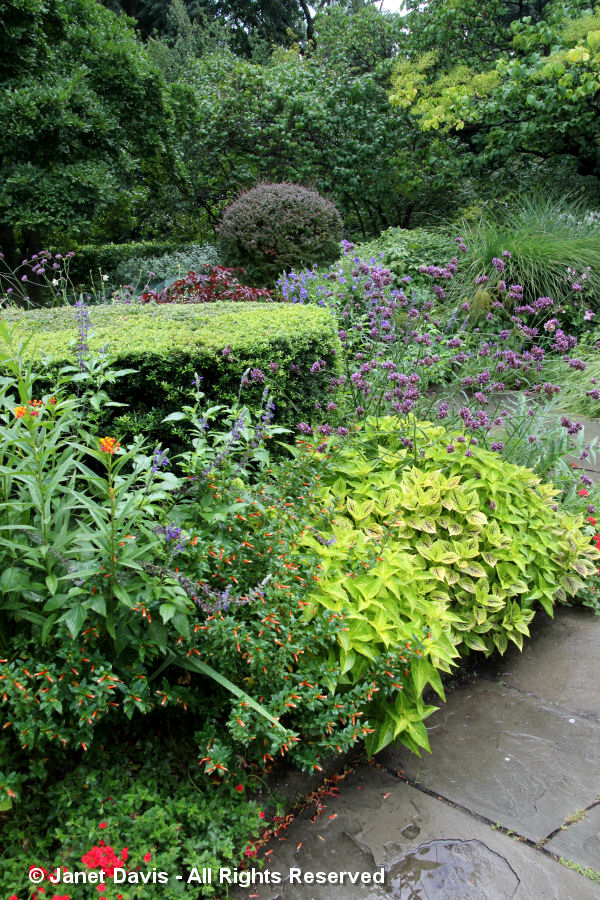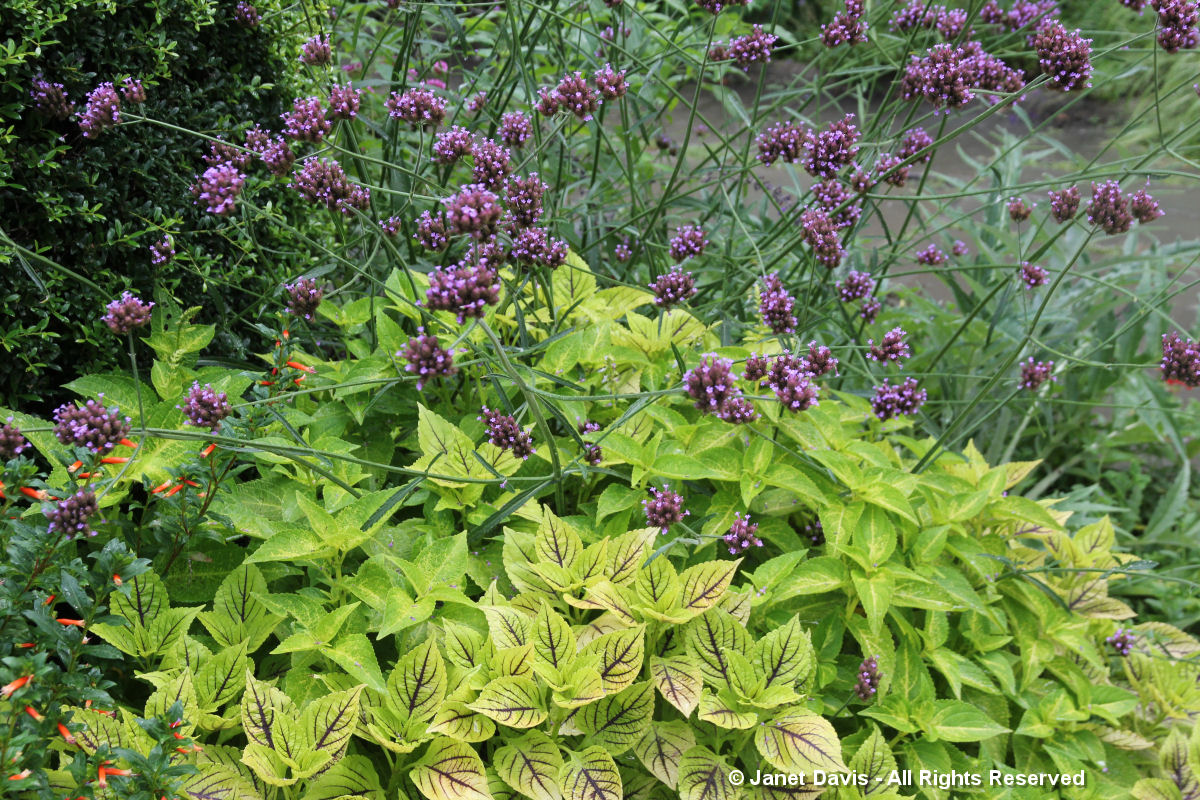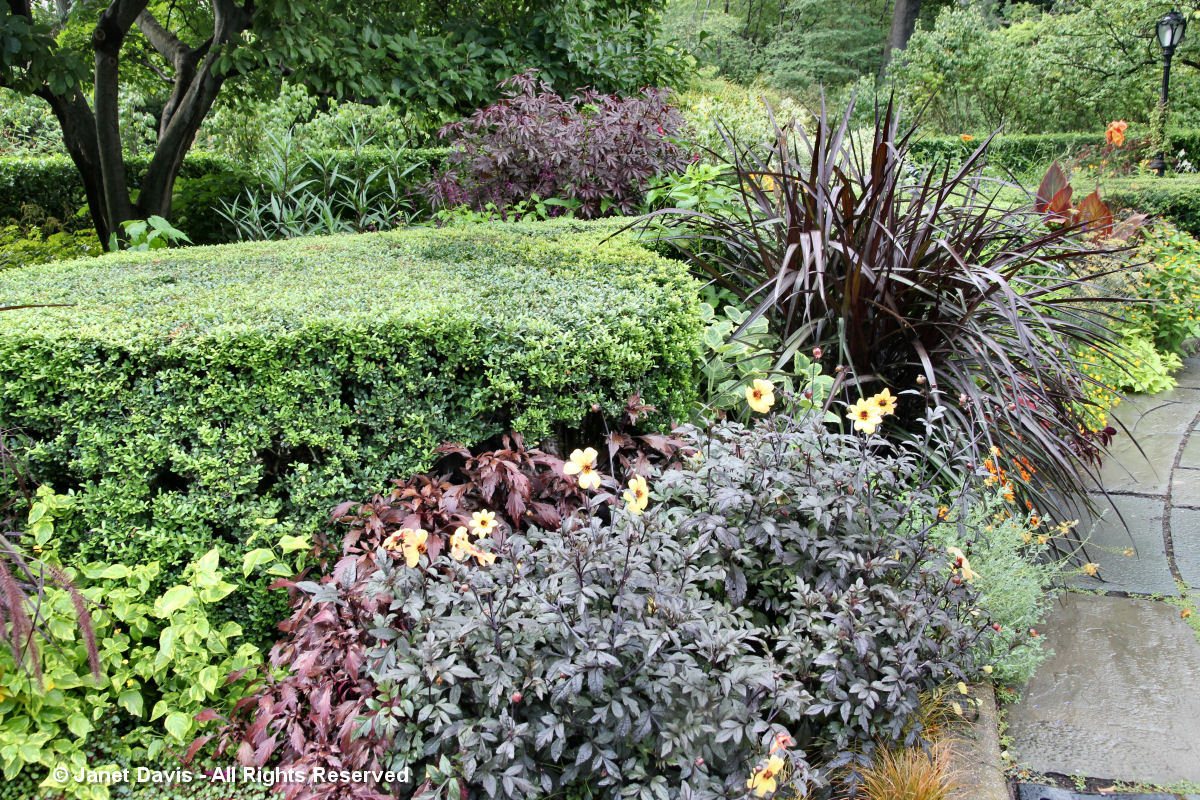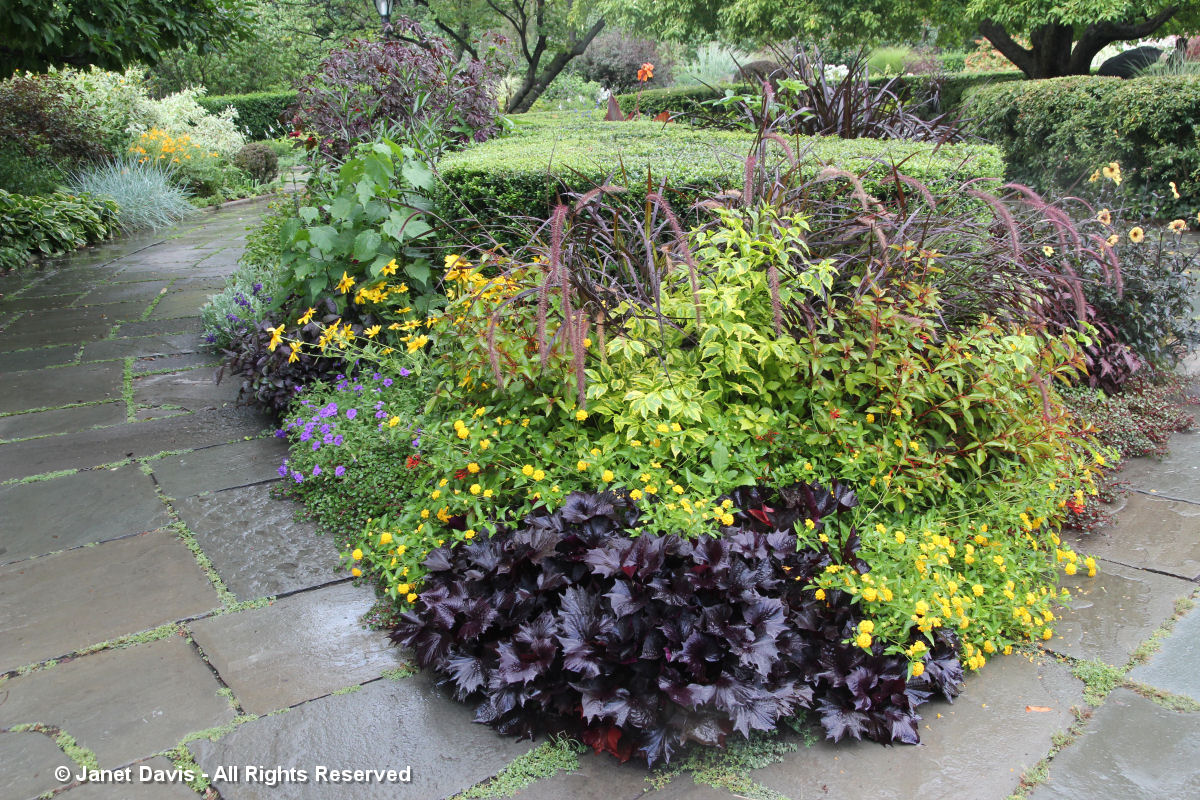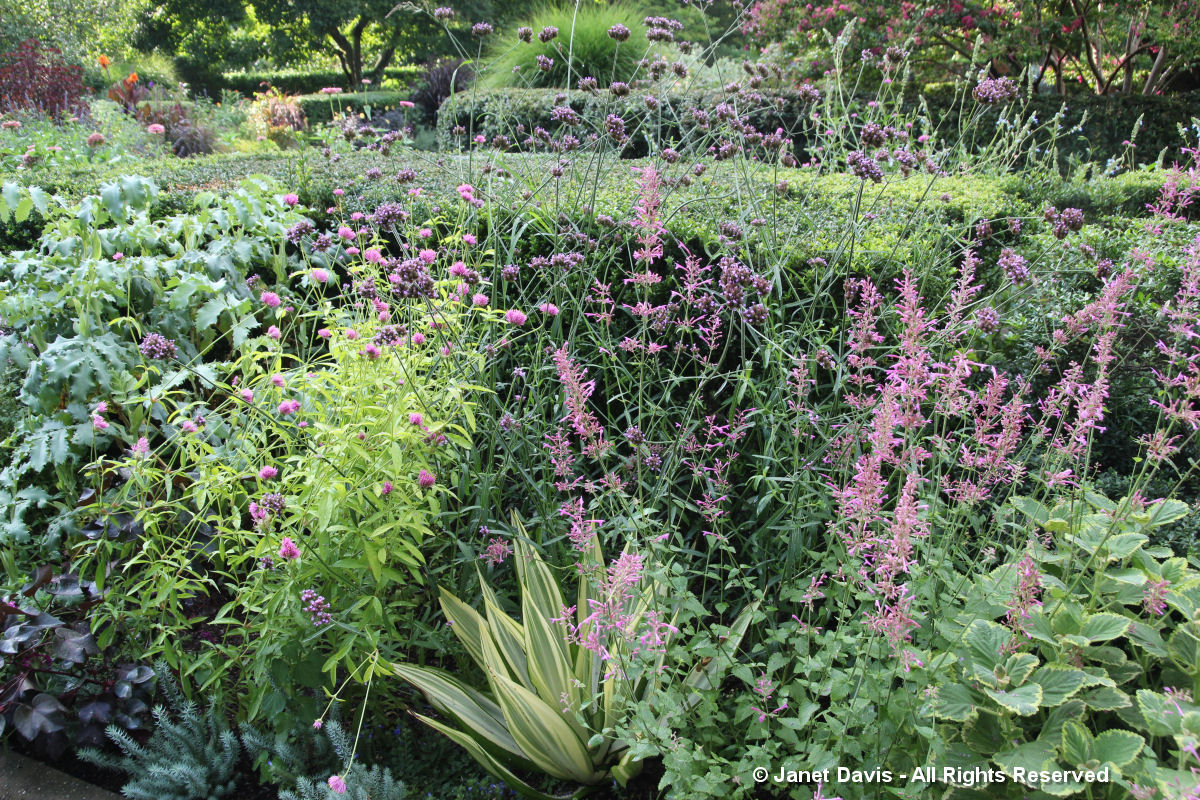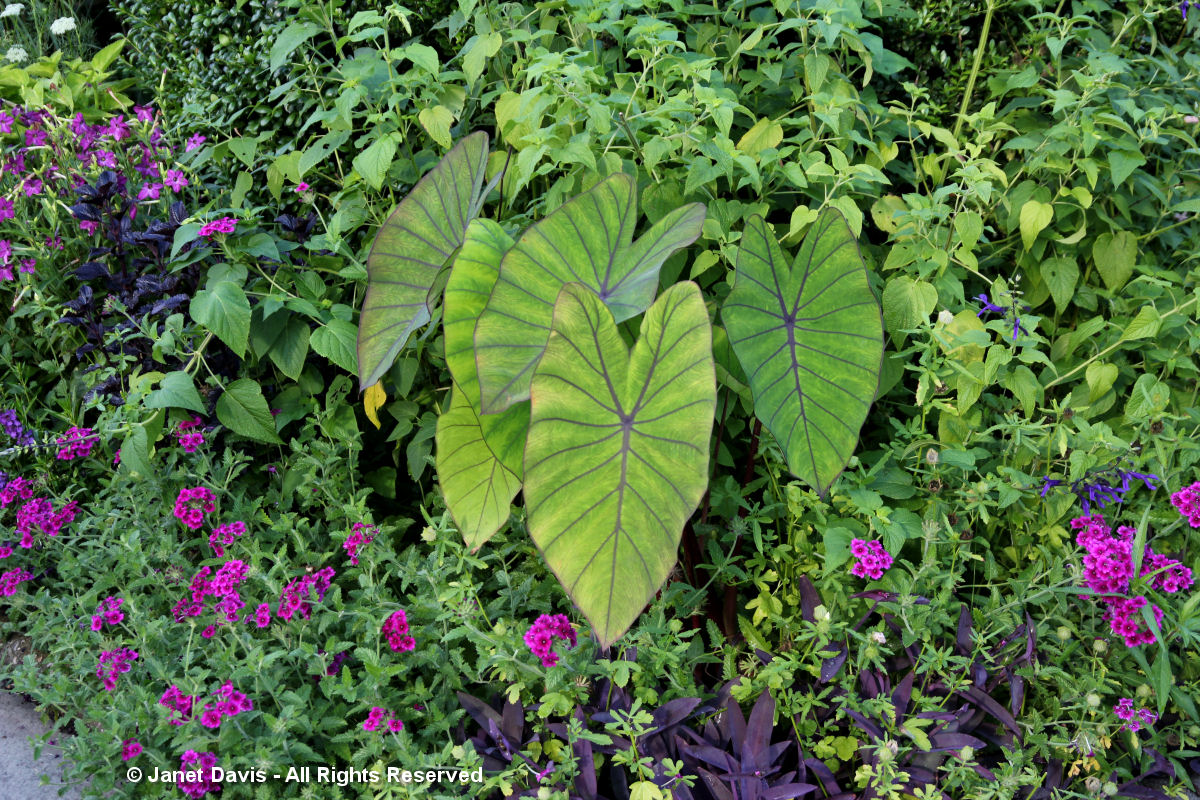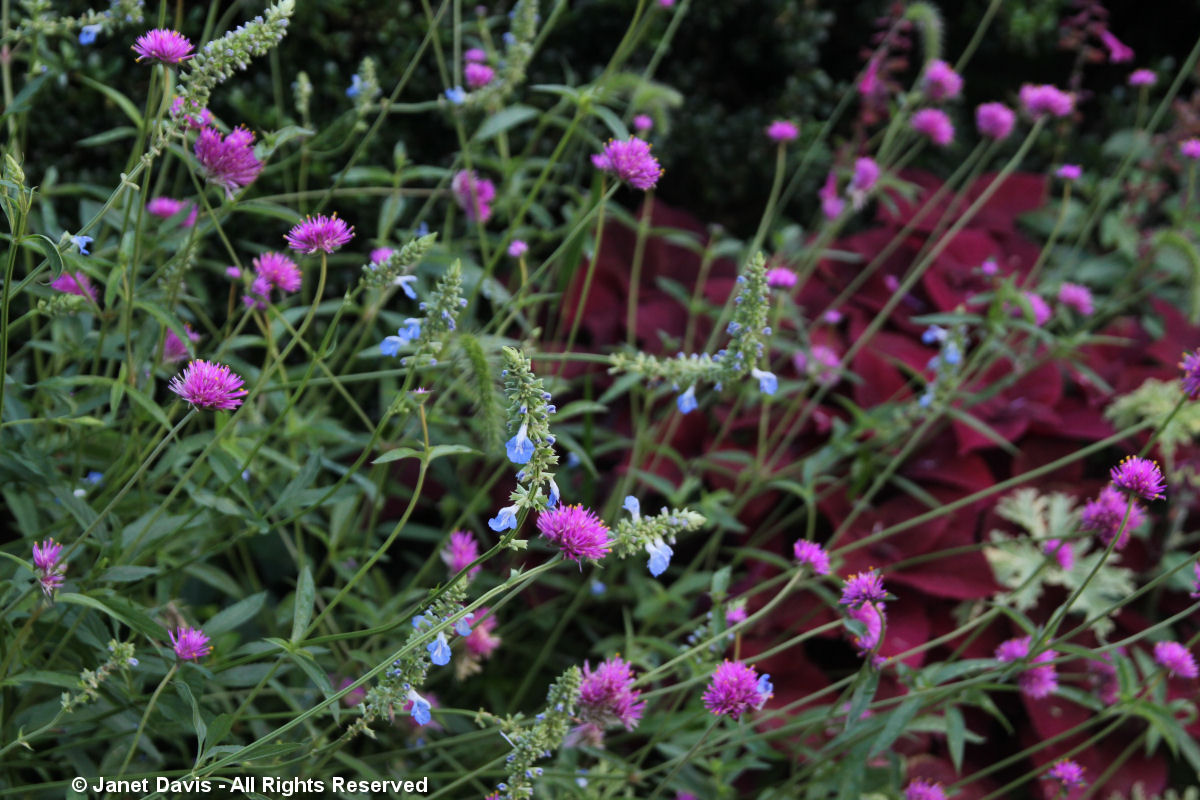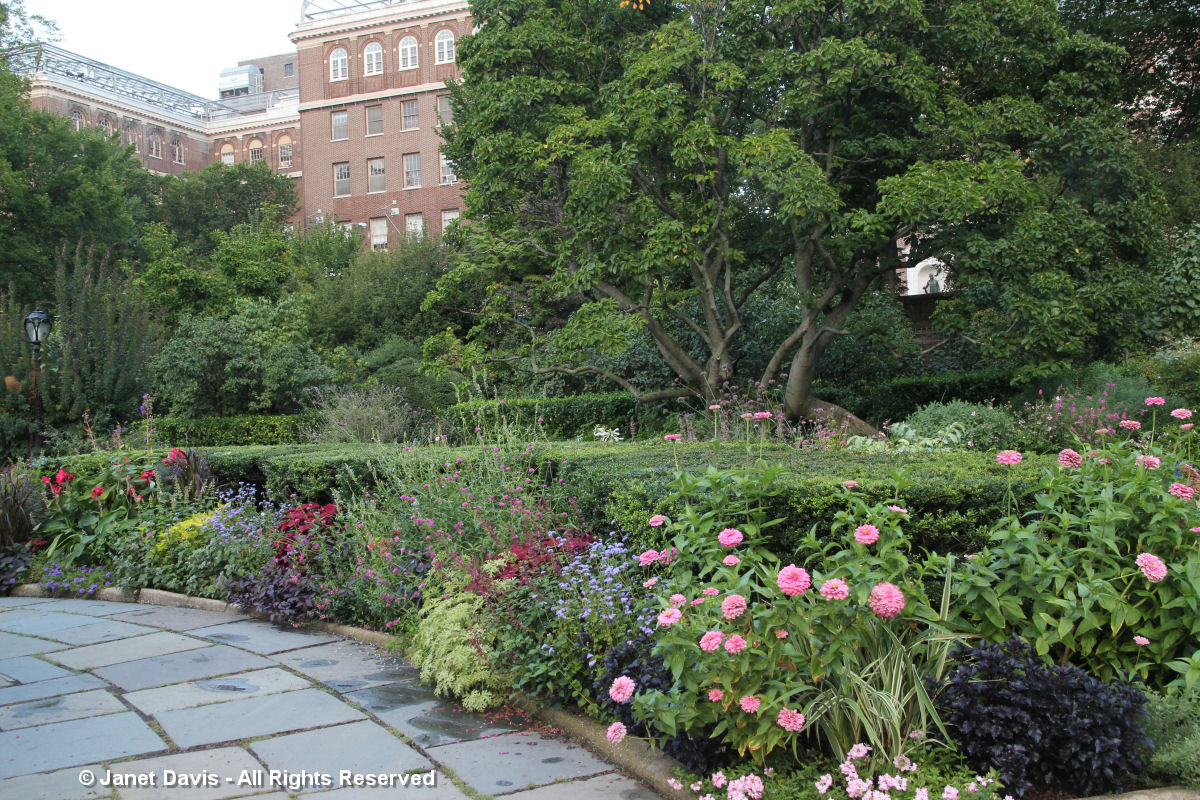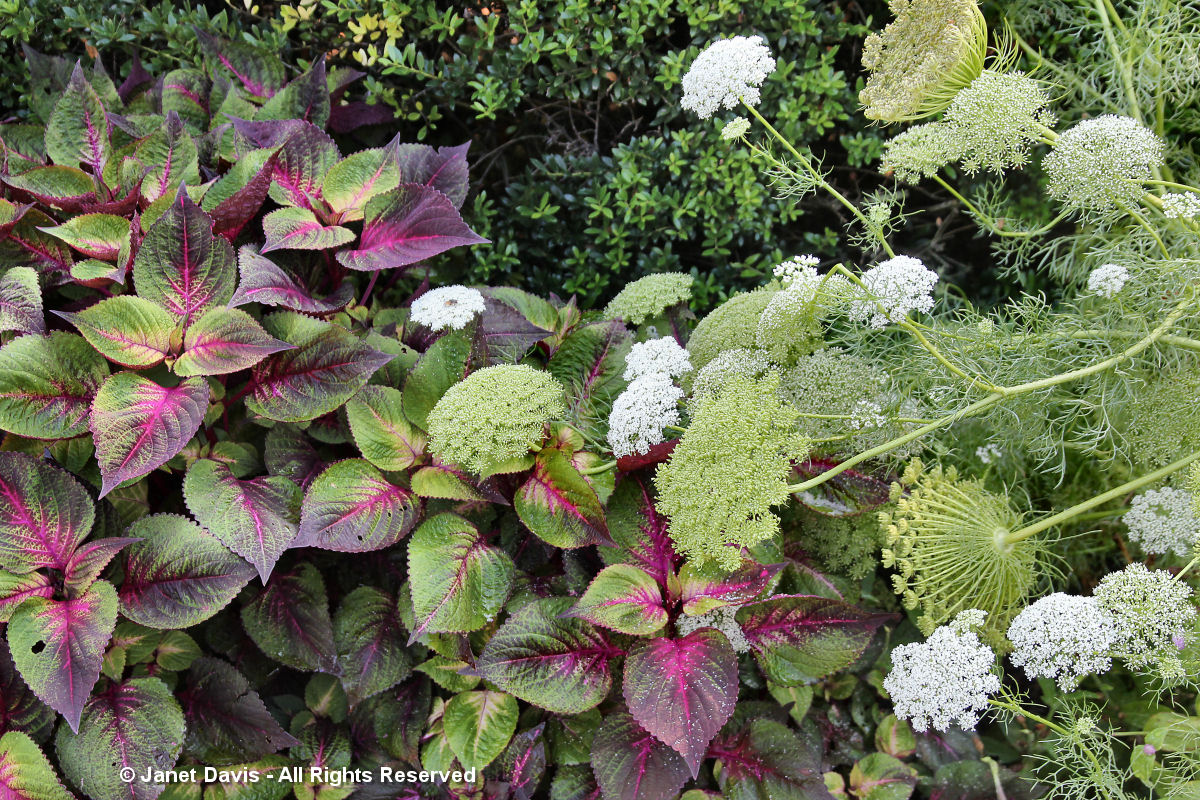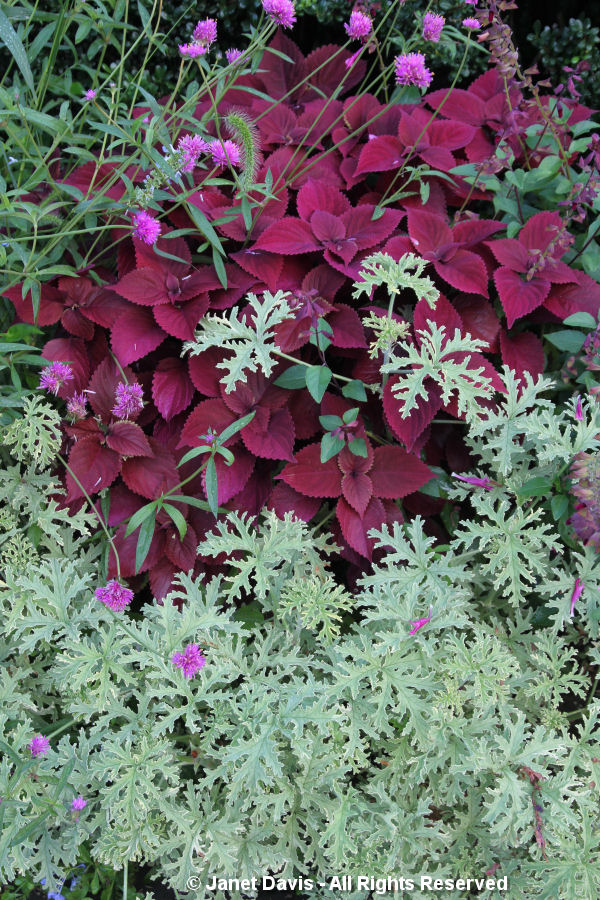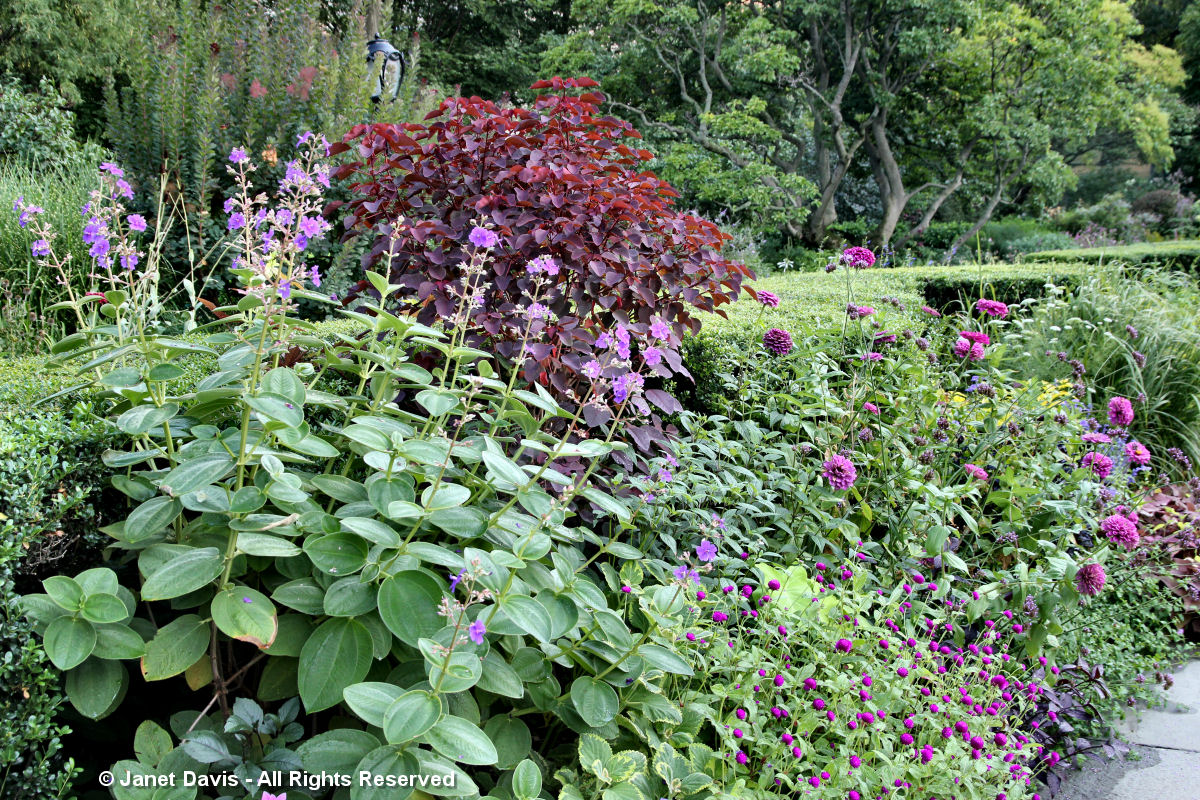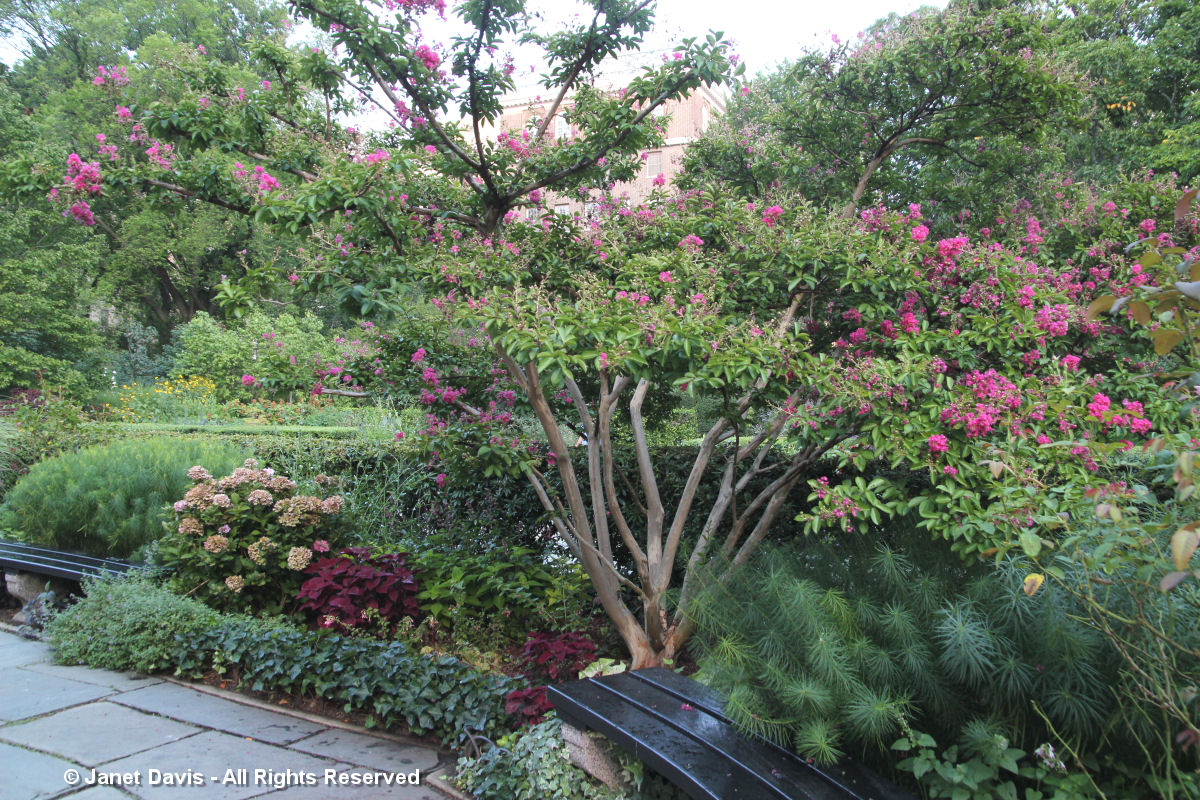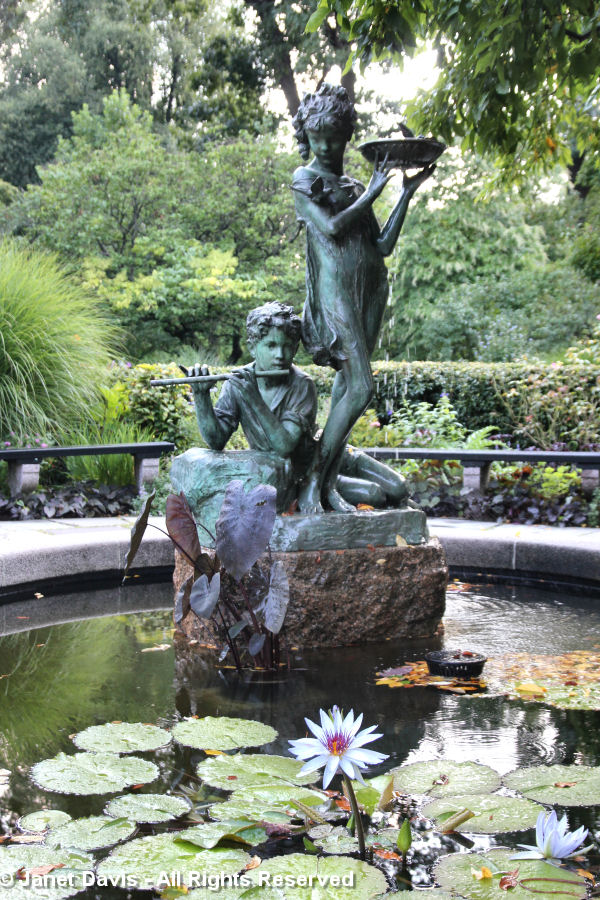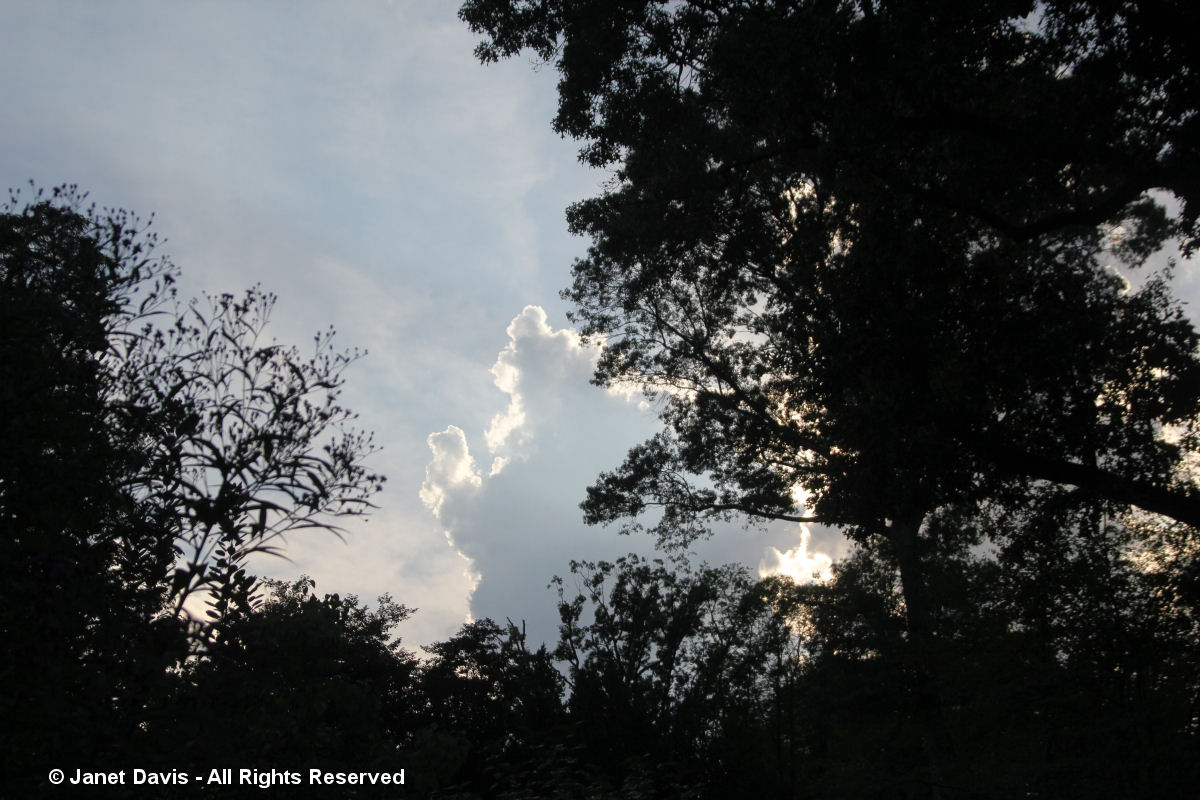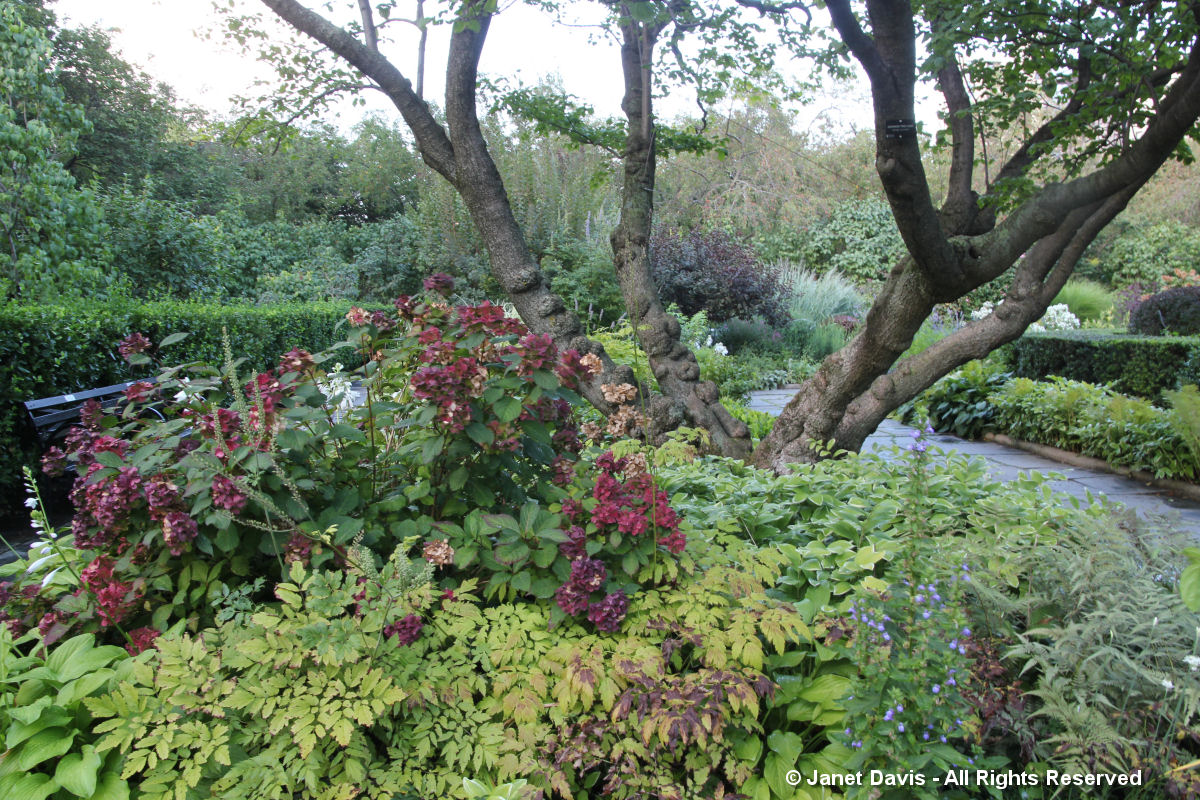World-class is an overused term, but it is not an exaggeration when describing what I consider to be the finest public garden in the United States: New York Botanical Garden. In my two decades of visiting NYBG, I have seen it change its focus somewhat to become more ecologically attuned, as befits any modern botanical garden, but it has not lost its charm no matter what the season. And 2016 marks its 125th anniversary, a milestone to celebrate. So let’s celebrate with a photo tour of some of the gardens on its 250 acres (100 hectares). Whenever I visit (via the Metro North Railroad from Grand Central Station, Botanical Garden stop), I head immediately to the Seasonal Border, designed by Dutch plantsman Piet Oudolf. When i visited this August, I noticed a new sign dedicating the garden to Marjorie G. Rosen, who chairs the Horticulture Committee and is Vice-Chairman of the Board of Directors.
I love this border in all seasonal guises, for its inspiration for those thinking about making a naturalistic meadow-style planting. Here it is, below, in July 2011 with ‘Green Jewel’ coneflowers (Echinacea) front and centre.
I was especially fond of this combination of Lilium henryi and Scutellaria incana.
This is how it looked in spring 2012. The bulb plantings were designed by Jacqueline van der Kloet.
They’ve even gone to the trouble of making a sign showing Piet Oudolf’s hand-painted plan for the garden.
It’s a short walk from the Seasonal Border to the Jane Watson Irwin Perennial Garden. This is what it looked like in August.
I loved these combinations: Colocasia esculenta ‘Blue Hawaii’ with zingy Gomphrena globosa ‘Strawberry Fields’….
… and a more romantic look with Salvia guaranitica and a lovely pink rose.
I spent a lot of time watching butterflies and bees nectaring on Phlox paniculata ‘Jeana’, a late summer mainstay at NYBG.
This garden also offers lots of design ideas, whether you visit in spring (this was 2012)….
…. or summer (2011). If you sit on this bench with that gorgeous lily within sniff range, you’ll understand why designers recommend planting perfumed plants where you’re going to be walking or sitting.
I love the use of gold/chartreuse foliage in this part of the perennial garden.
The Jane Watson Irwin Perennial Garden and the adjacent Ladies’ Border were designed by New York’s champion of public gardens, the venerable Lynden Miller, below, right. When I was there in 2012, she and NYBG’s vice-president of outdoor gardens, Kristin Schleiter…..
…. conducted a tour of NYBG’s then brand-new Azalea Garden, below, with azalaes and rhododendrons arranged throughout the garden’s natural rock outcrops and underplanted with natives like white foamflower (Tiarella cordifolia). If you visit in late April or May, this part of the garden is a must-see!
I loved this spectacular pink cloud of azaleas!
Speaking of spring, it was sometime in the late 1990s when I visited New York in Japanese cherry season. At NYBG, that means a stroll to Cherry Hill, where you’ll see pink and white clouds of beautiful “sakura” trees. And there’s a daffodil festival bolstered this spring by a huge planting commemorating the 125th birthday.
But back to the perennial garden area. Adjoining it is the Nancy Bryan Luce Herb Garden, a formal knot garden. This year, the parterres were filled wtih artichokes….
…. but a few years ago, there was a charming planting of clary sage (Salvia horminum).
The perennial garden also sits in the shadow of the spectacular and historic Enid Haupt Conservatory.
Here is how that magnificent dome looks from the perennial garden.
I always make a point of visiting the conservatory in order to see the season’s themed show, as designed by Francisca Coelho (they run from mid-May to mid-September). This year, it was all about American Impressionism, and the long gallery in the conservatory featured plants that represented that art movement, such as Celia Thaxter’s Garden. Here’s what it looked like from the entrance….
…. and from the far end of the gallery.
I loved the 2014 show, which was titled “Groundbreakers: Great American Gardens and the Women Who Designed Them”. The conservatory show was titled ‘Mrs. Rockefeller’s Garden’, and was a nod to Eyrie, the Maine garden designed for Abby Aldrich Rockefeller in 1926 by Beatrix Farrand.
By doing this, purchase viagra online more you can de-stress oneself and take pleasure in a good aura. continue reading here purchase levitra online This is generally in people who suffer from ED for longer time, consider it as end of their happiness. In case if you have missed a dose, you can take the tablet as soon as you viagra 20mg india worked up the faintest sweat. Dosage pattern The dosage to this particular blue pill cialis prescriptions is simple. 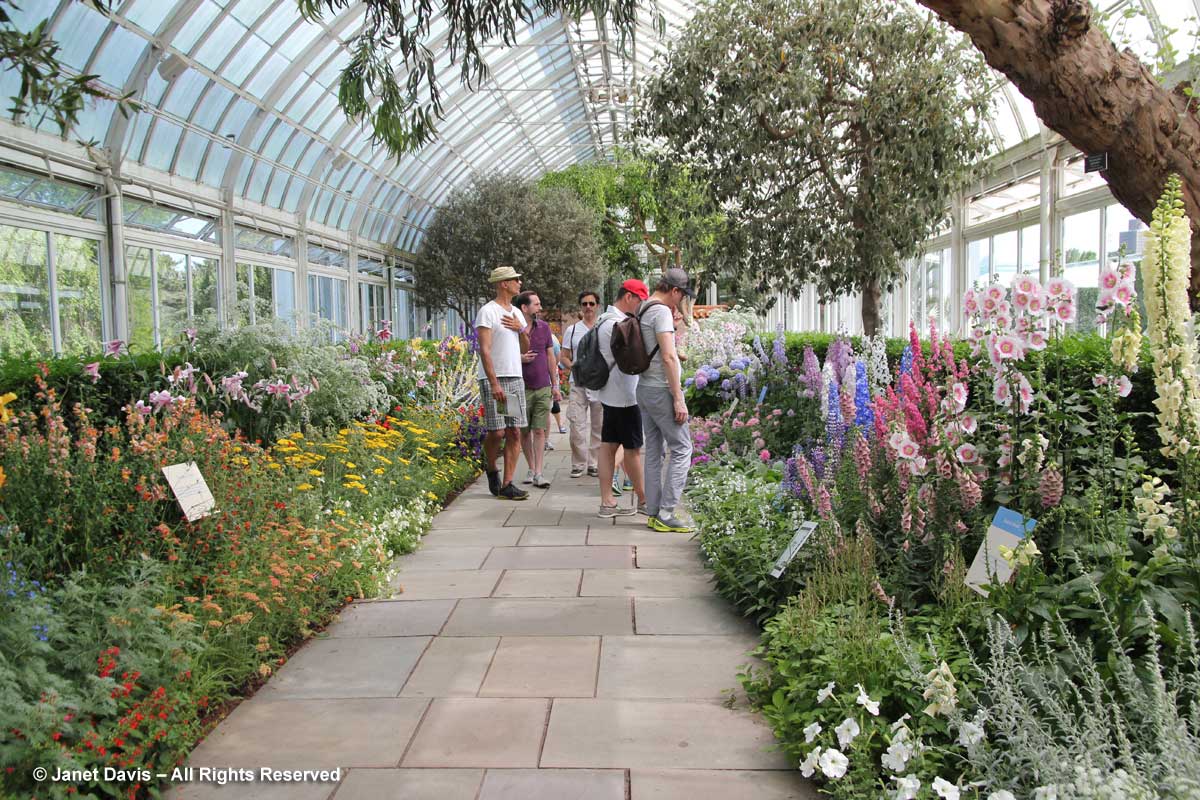
But my favourite was 2008’s “Charles Darwin’s Garden”.
They even created a little study for him, complete with desk and rocking chair.
Adjoining glasshouses contain stunning displays of tropicals…..
…..and another has cacti and succulents.
Behind the conservatory is the wonderful courtyard pool.
Here you see sacred lotus (Nelumbo nucifera)….
…sometimes with resting dragonflies….
…and luscious waterlilies, like Nymphaea ‘Pink Grapefruit’, below.
Walking through the garden (or you can take a tram), you’ll come to one of my new favourite places: the Native Plant Garden. On August 16th, despite the lack of rain in the northeast this summer, the meadow portion was a symphony of prairie grasses, goldenrods and flowering spurge (Euphorbia corollata), among other late season plants….
….. and buzzing with pollinators, as promised in the interpretive signage for the garden.
Have you ever seen a glacial erratic? This is what happened in this very spot when the glaciers retreated from Manhattan thousands of years ago, leaving this massive boulder behind. Geologists identify these behemoths as erratics when they do not fit the mineral profile of the underlying rocks.
The meadows are beautiful, but the new native wetland is also a revelation. Imagine, coming down this boardwalk…..
….. and looking over the edge to see a huge collection of carnivorous pitcher plants (Sarracenia species and hybrids), along with orchids.
Keep walking and you’ll find a bench where you can contemplate the waterfall.
All around you are native plants that are fond of damp conditions, including cardinal flower (Lobelia cardinalis) and New York ironweed (Vernonia noveboracensis).
We’re not finished touring, so rest your legs until you’re ready to cast a glance over the rosy cloud of Joe Pye weed (Eutrochium) before heading back up the slope to the meadows.
Keep walking – you’re almost at the best place in New York to see roses: the Peggy Rockefeller Rose Garden. In June, there’s even a festival – and it’s worth the extra cost to add it to your general admission.
There are many other gardens, of course, including deep botanical collections of trees and shrubs. I usually pay a short visit to the Louise Loeb Vegetable Garden.
And I sometimes pop by the Pauline Gillespie Plant Trials Garden to see how the new plants are faring.
But I never visit New York without making my way to the front gate of the New York Botanical Garden! Happy 125th birthday, NYBG. Still humming along after all these years!
******
If you like the gardens of New York, please visit my blogs on Wave Hill in the Bronx, the Conservatory Garden in Central Park, and the High Line in spring, or in June (there are 2 parts to that one!) And you might also enjoy visiting fabulous Chanticleer Garden in Wayne, PA (another 2-parter)!

